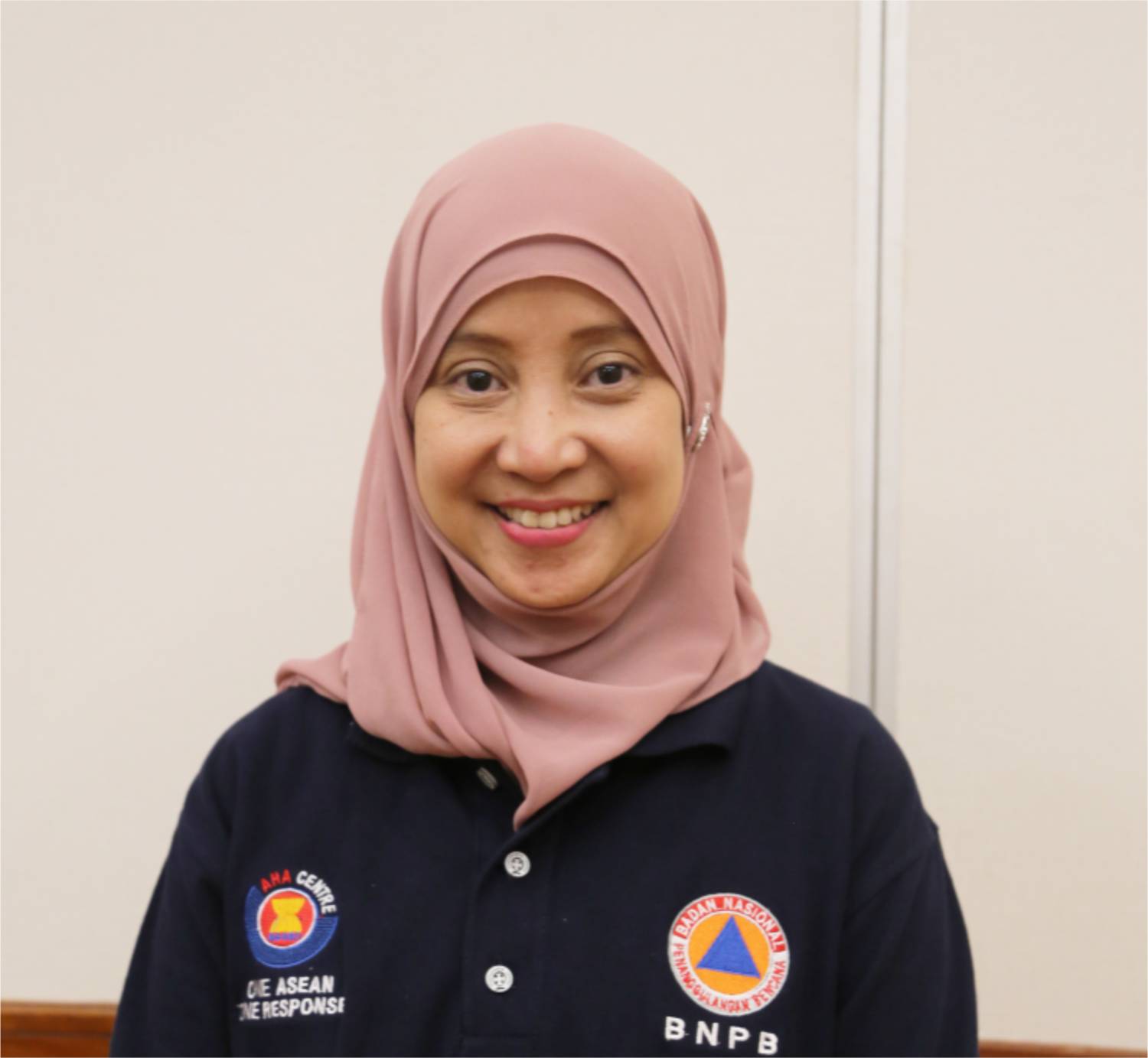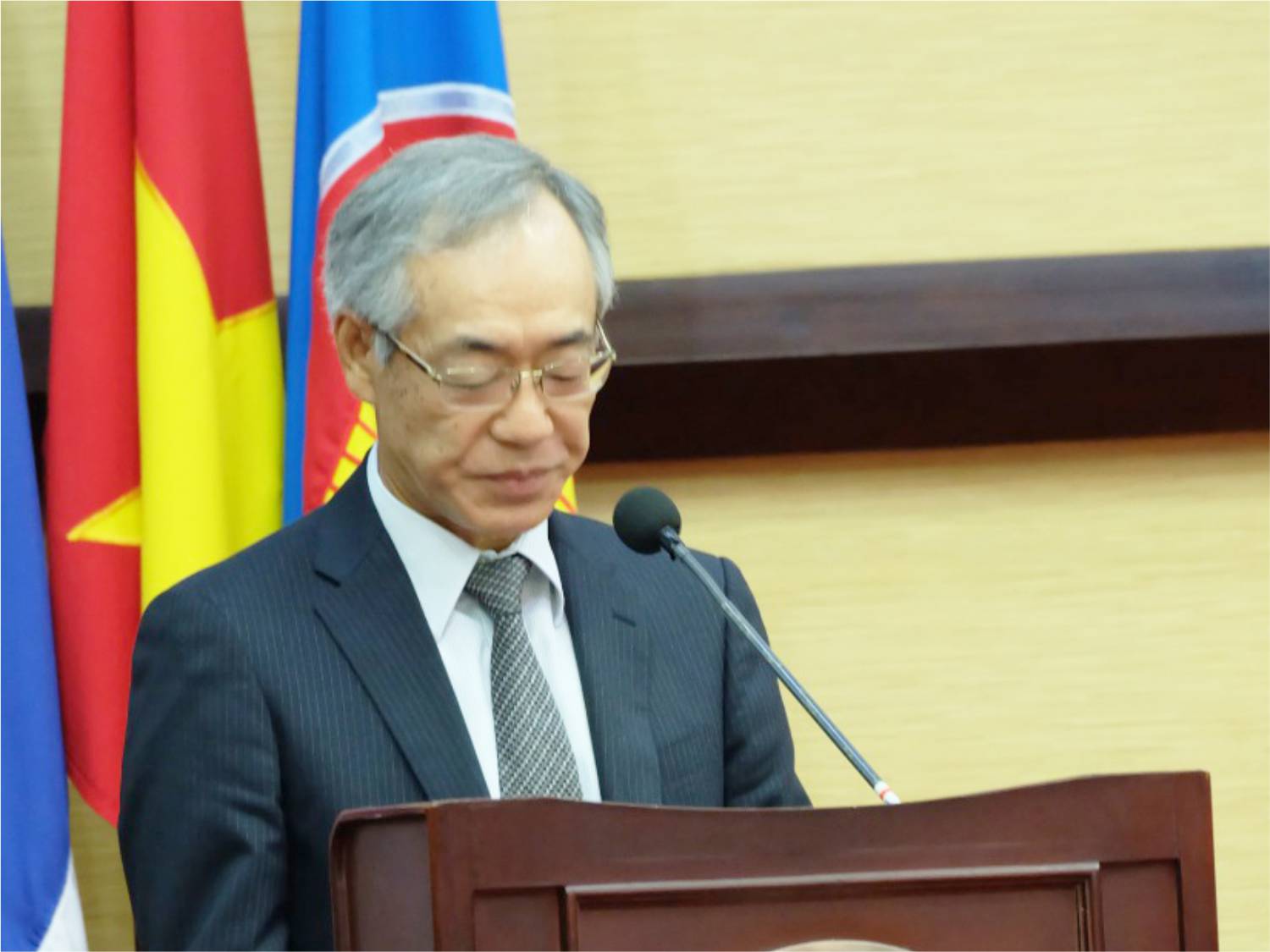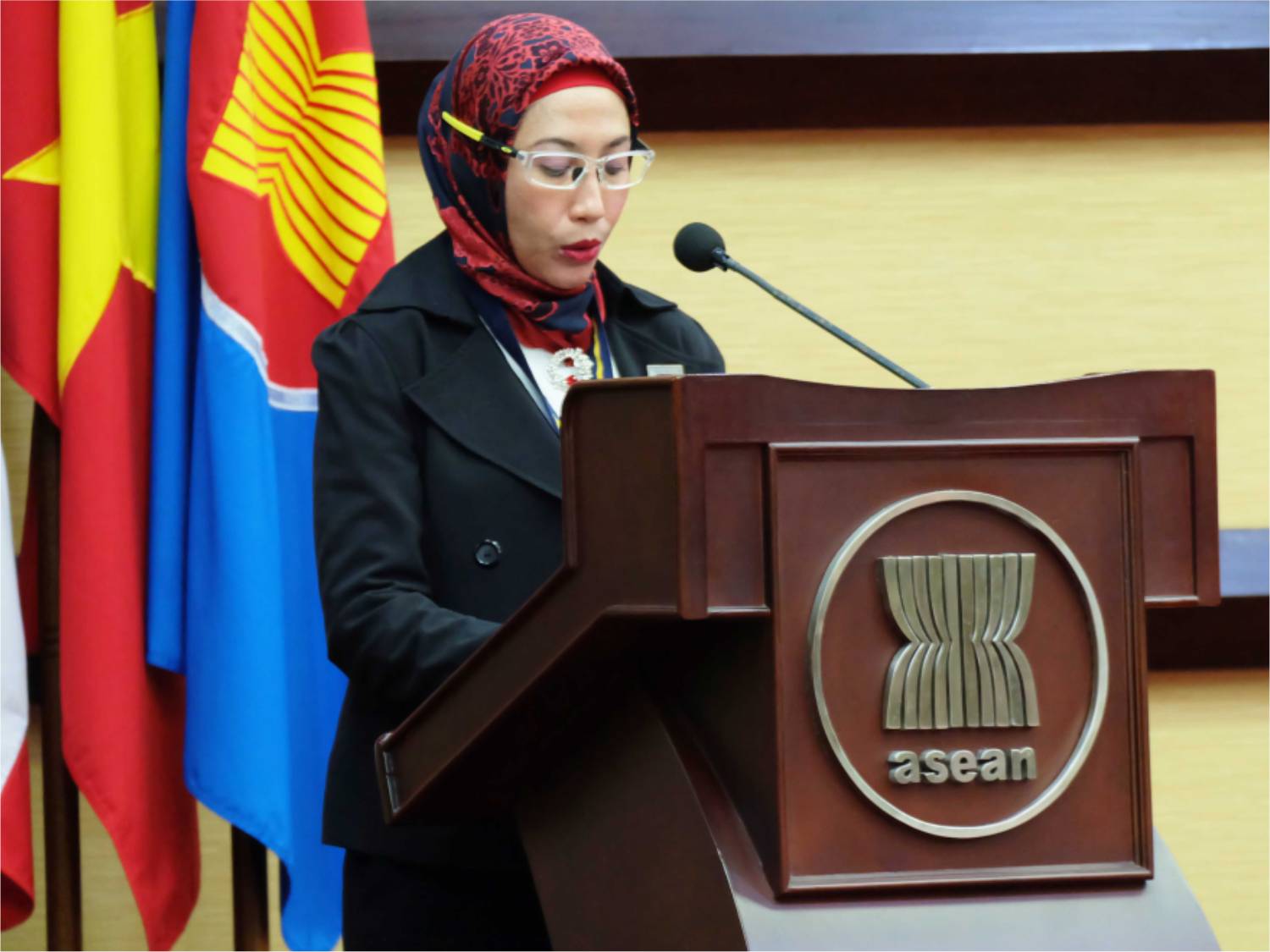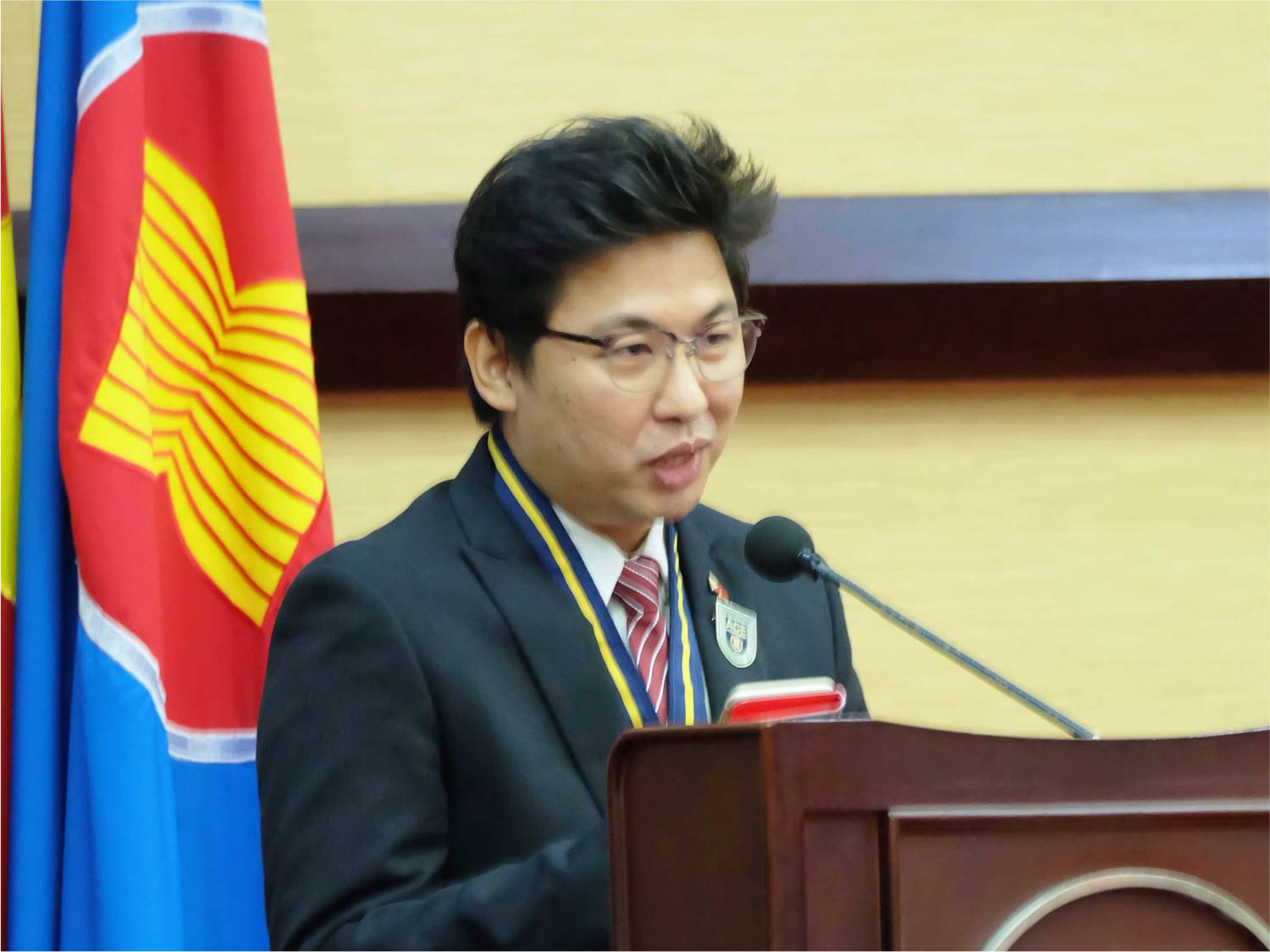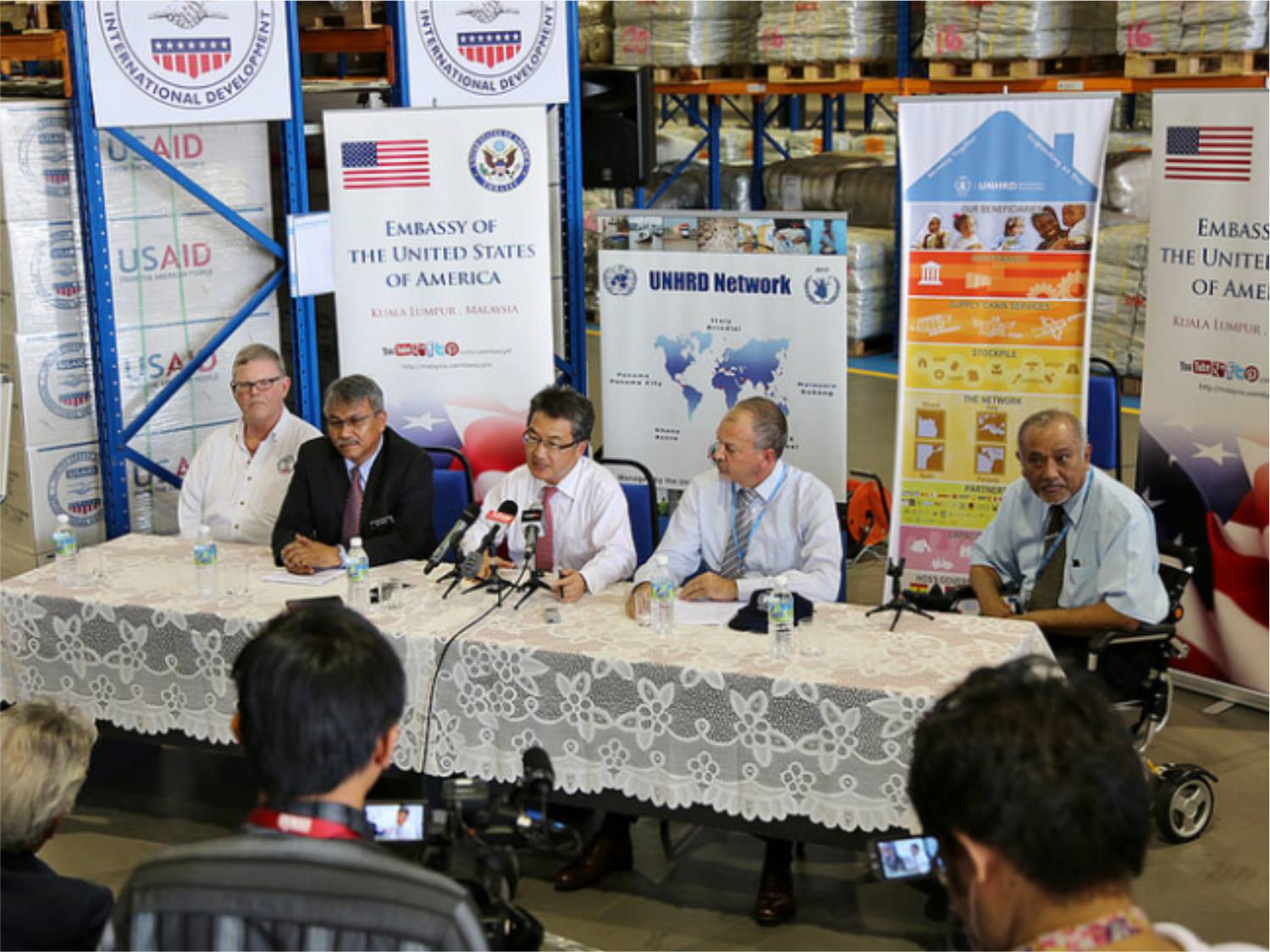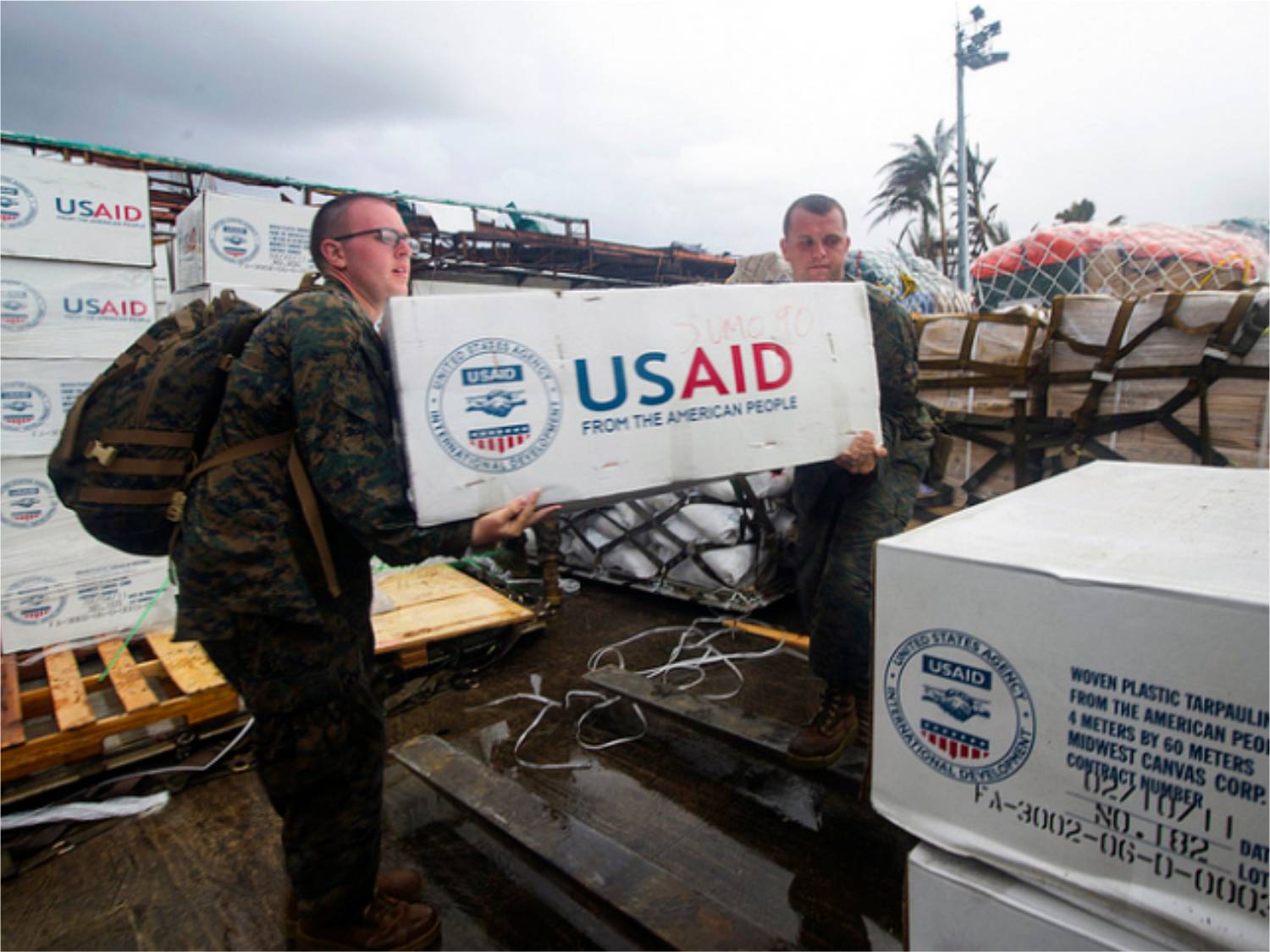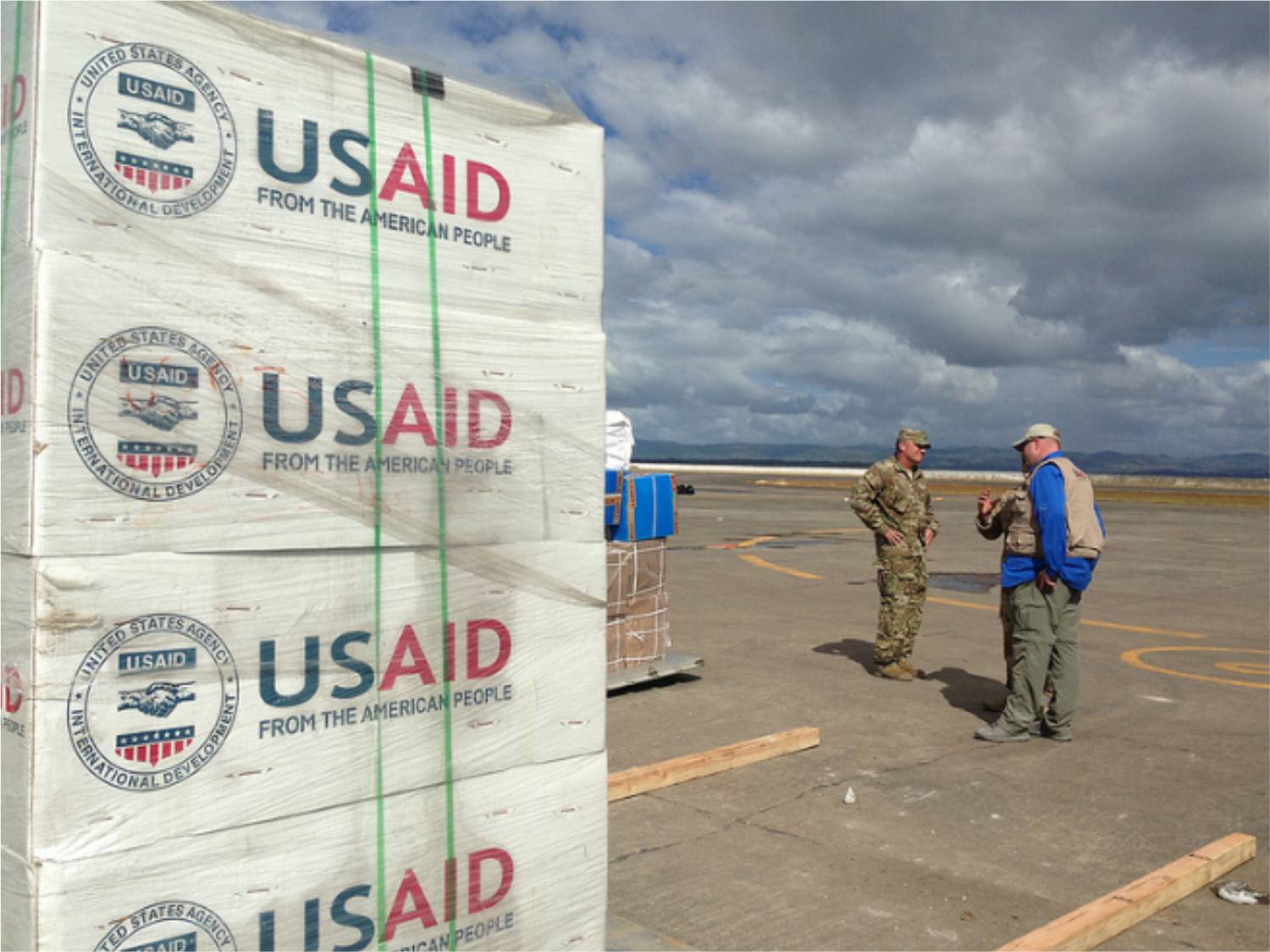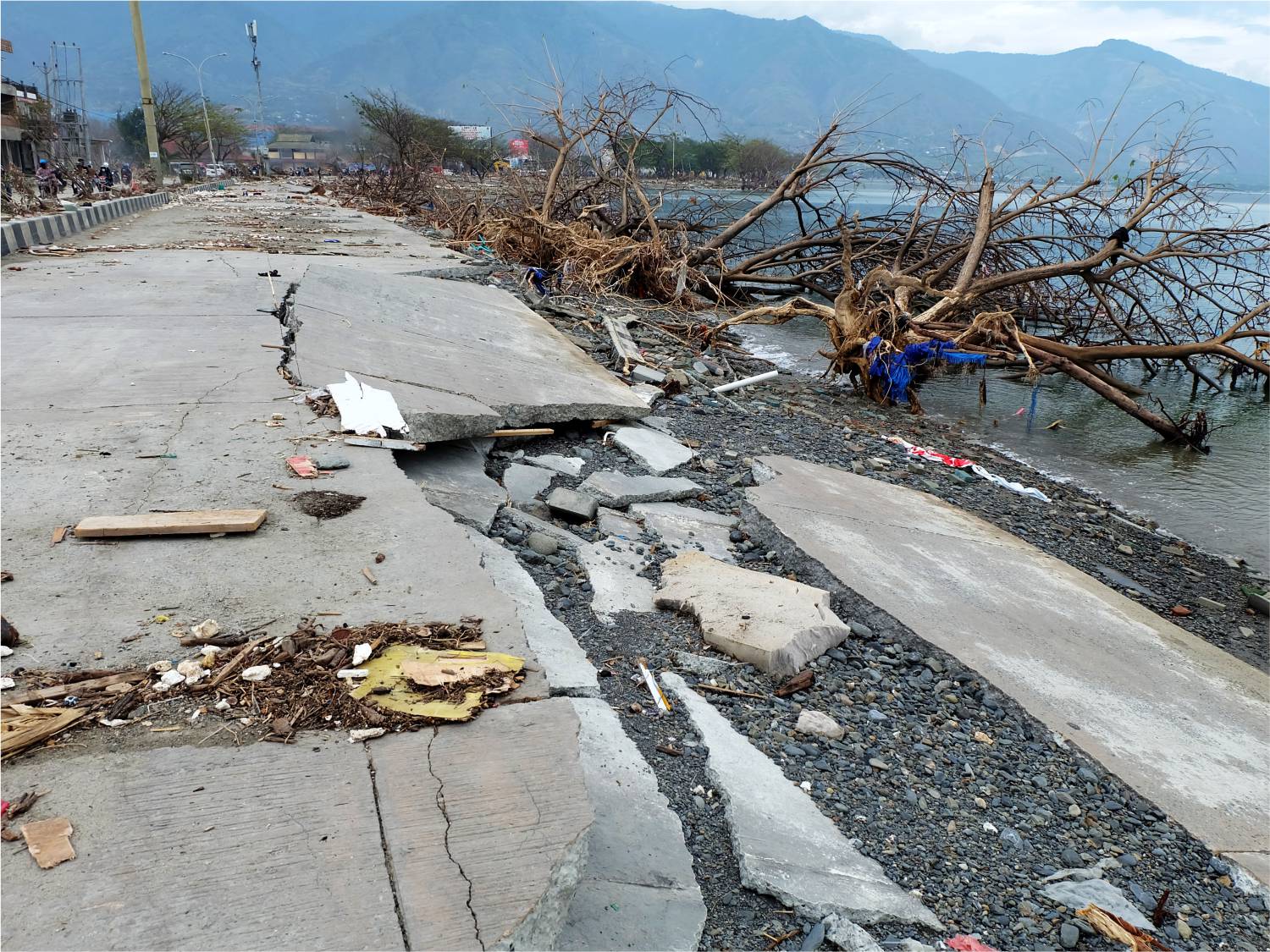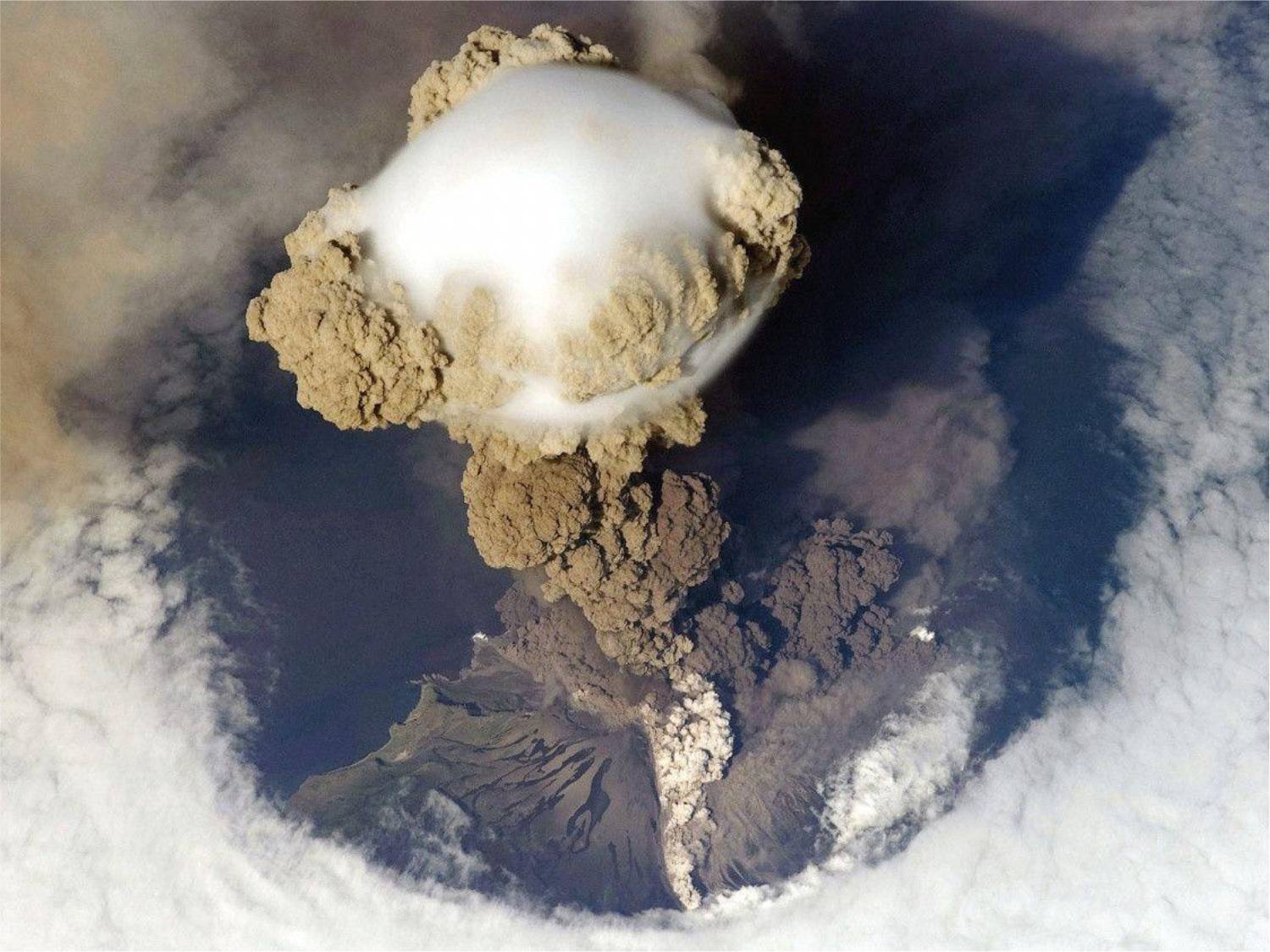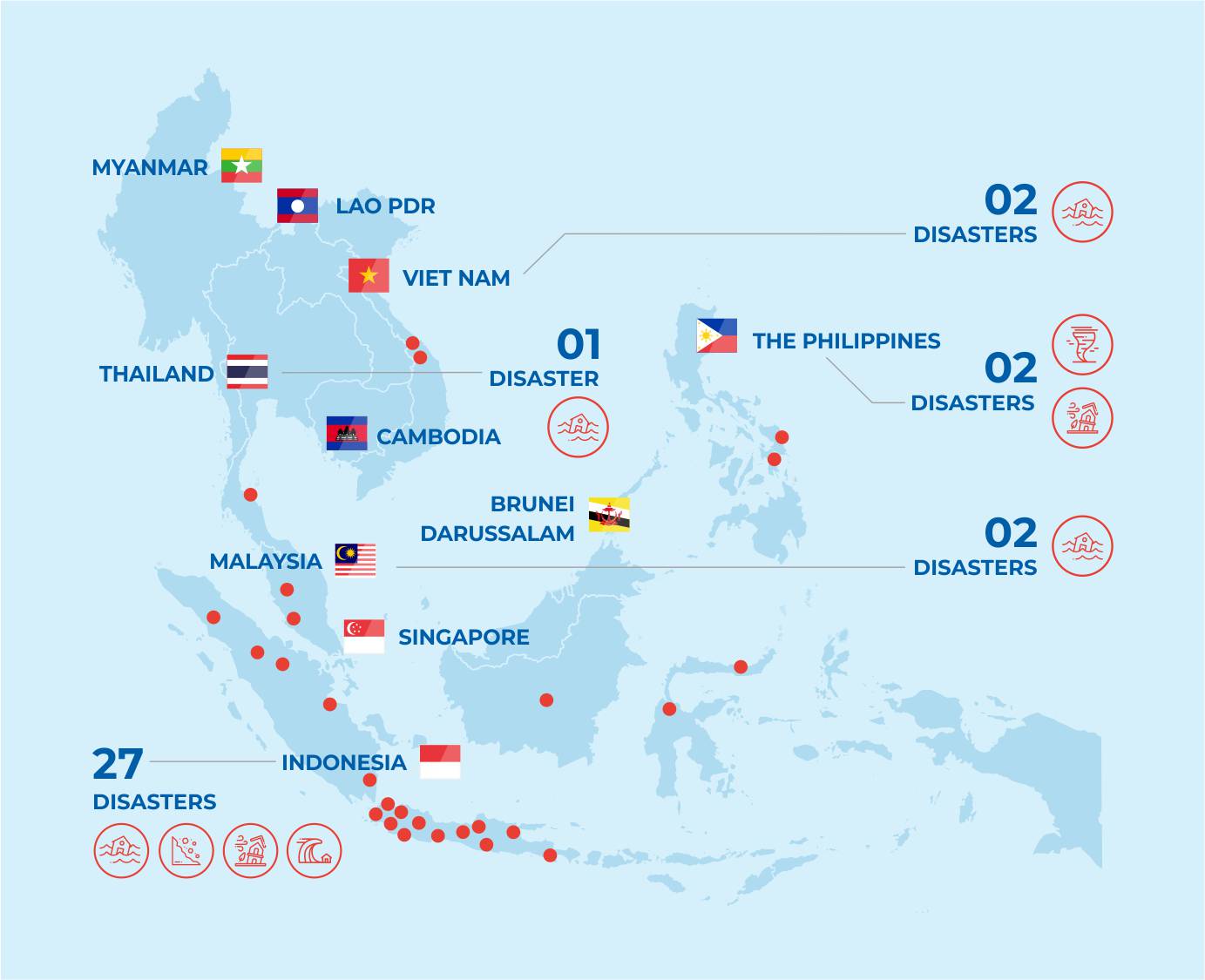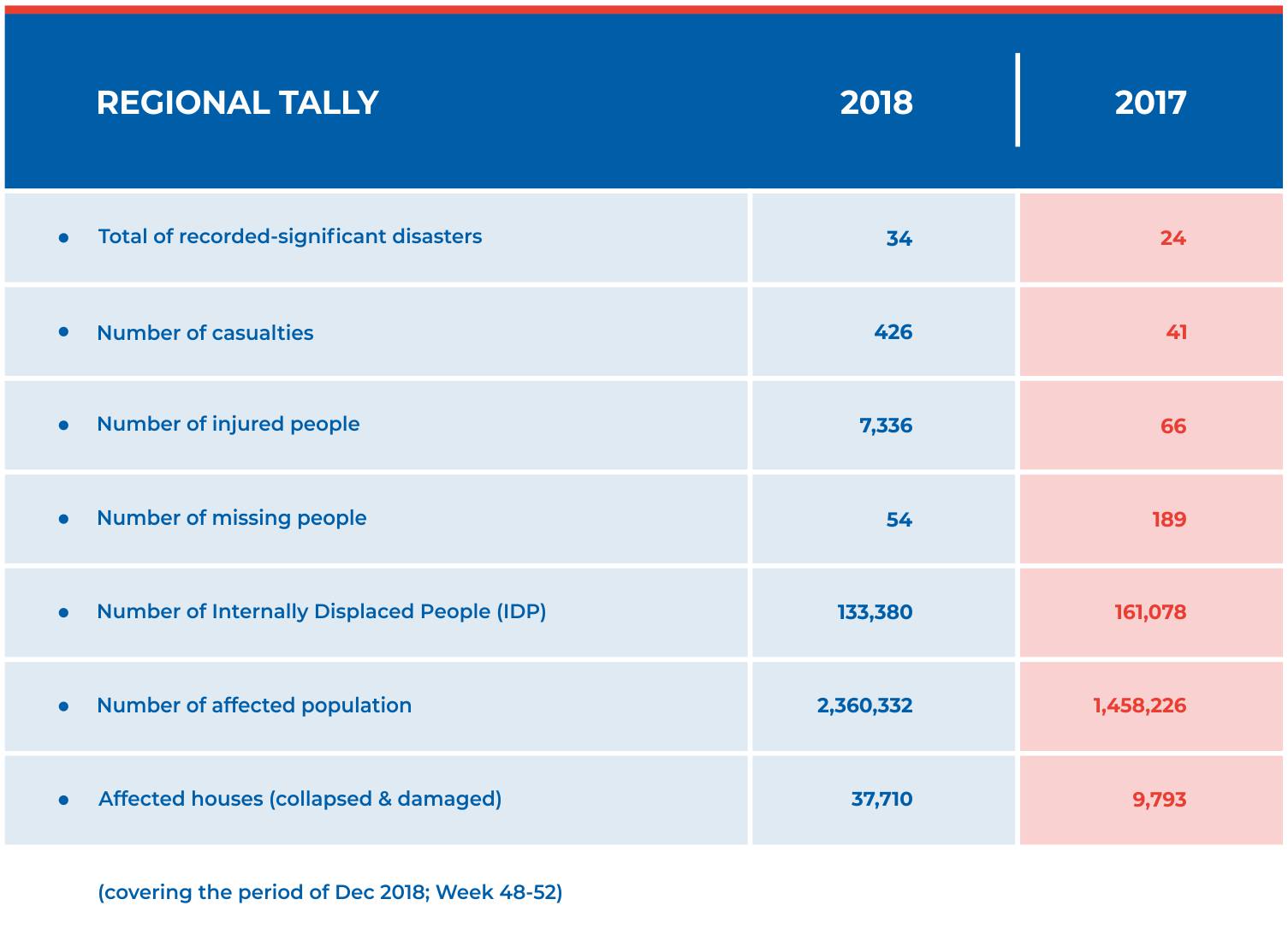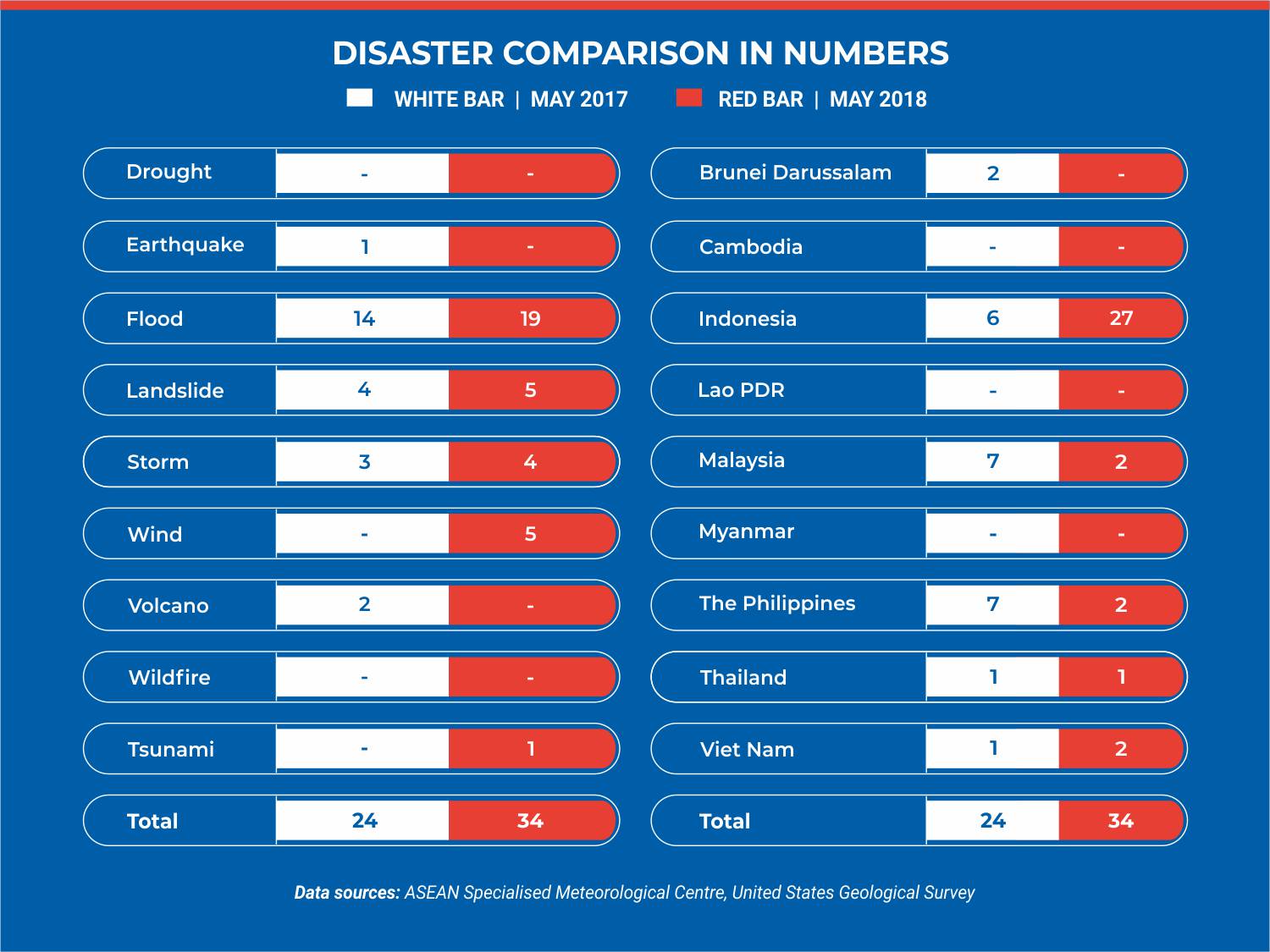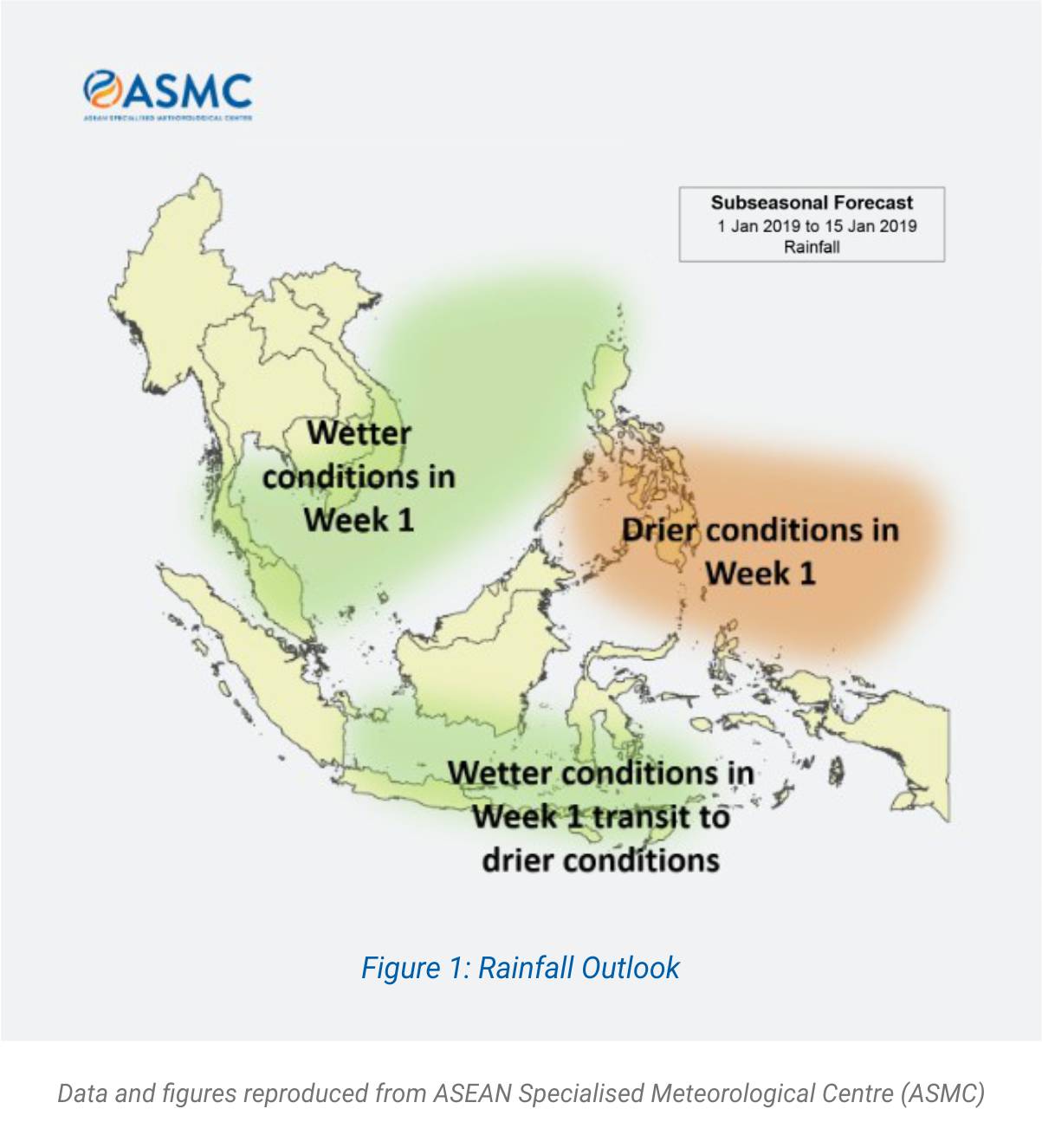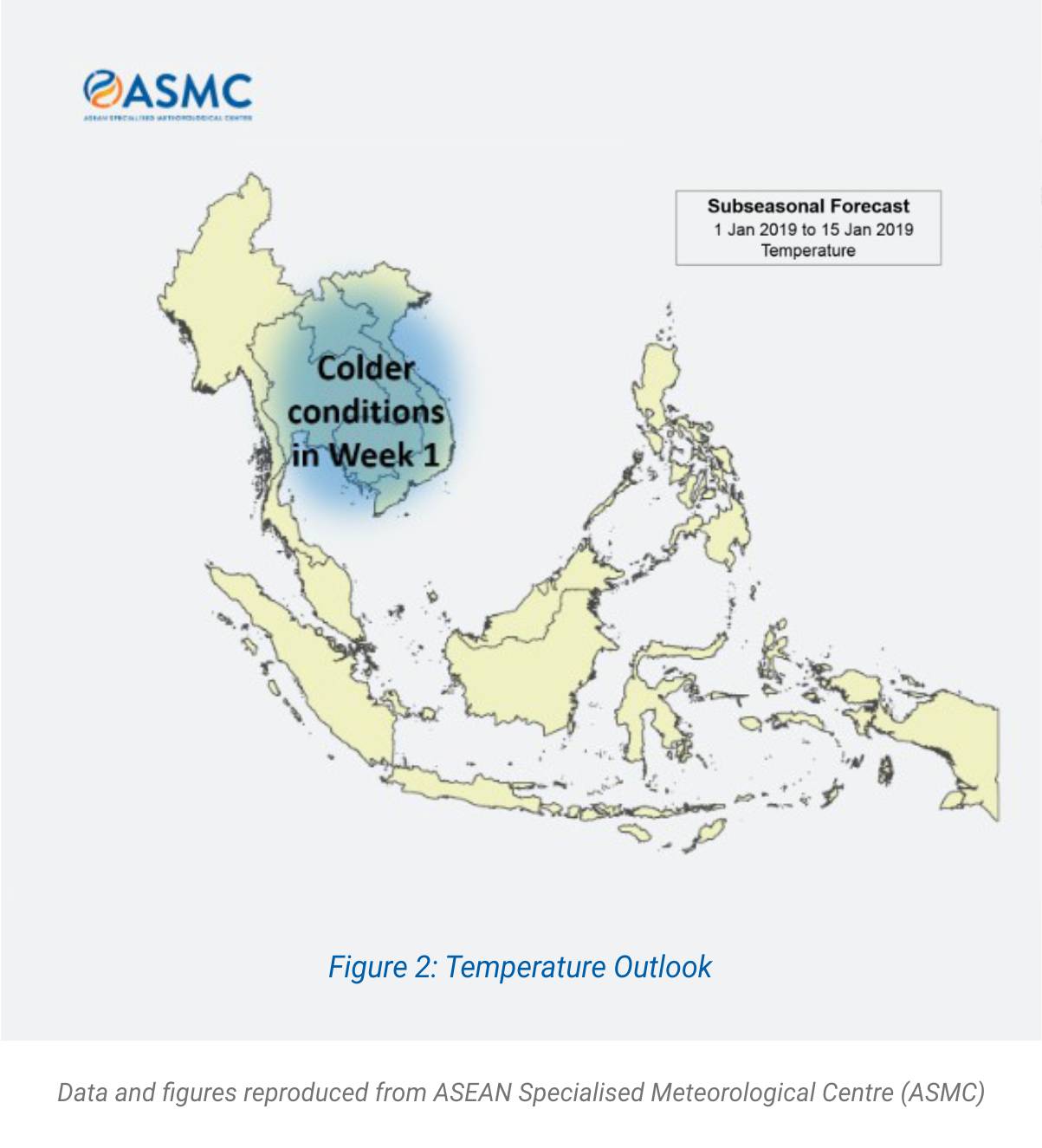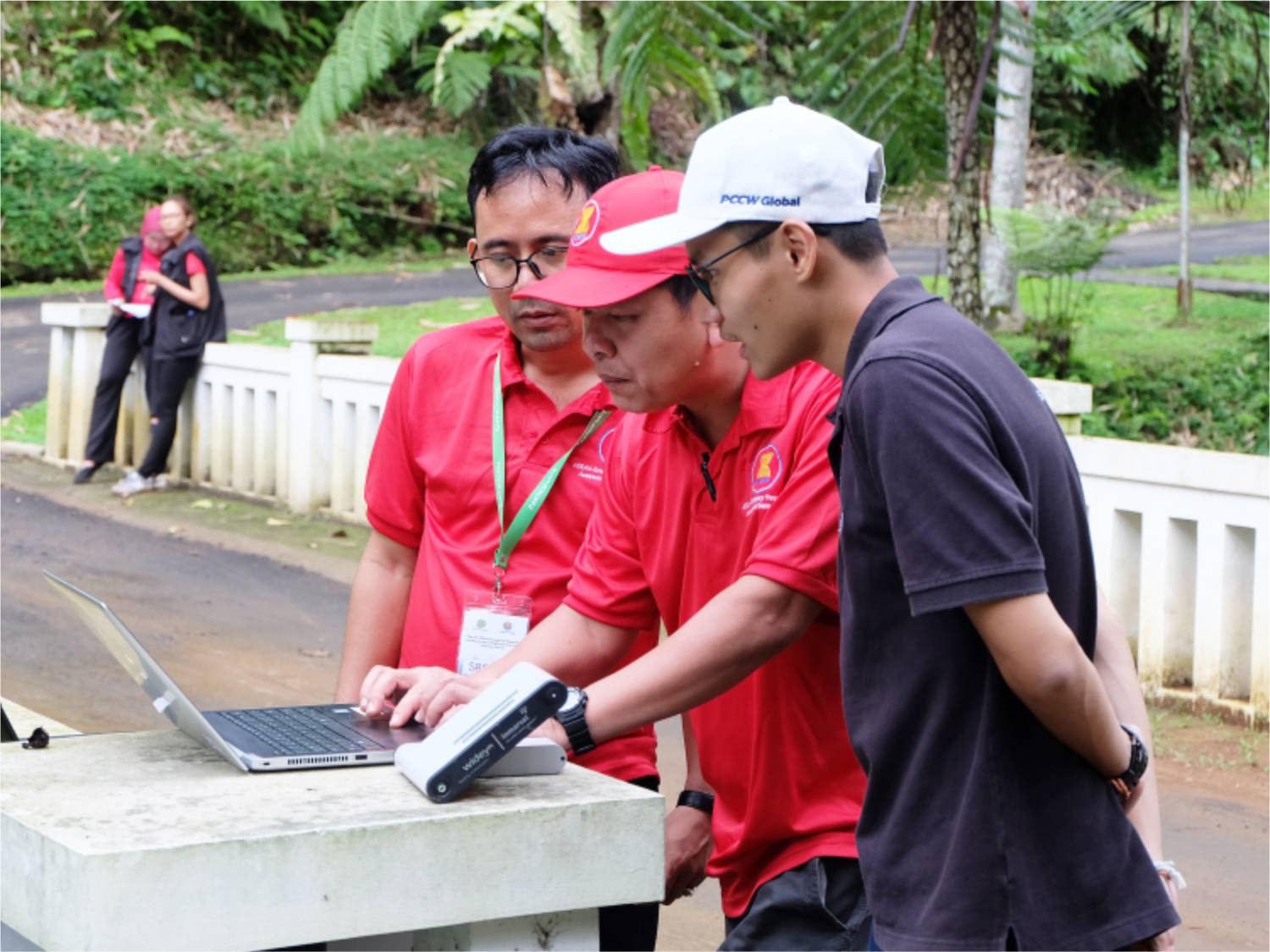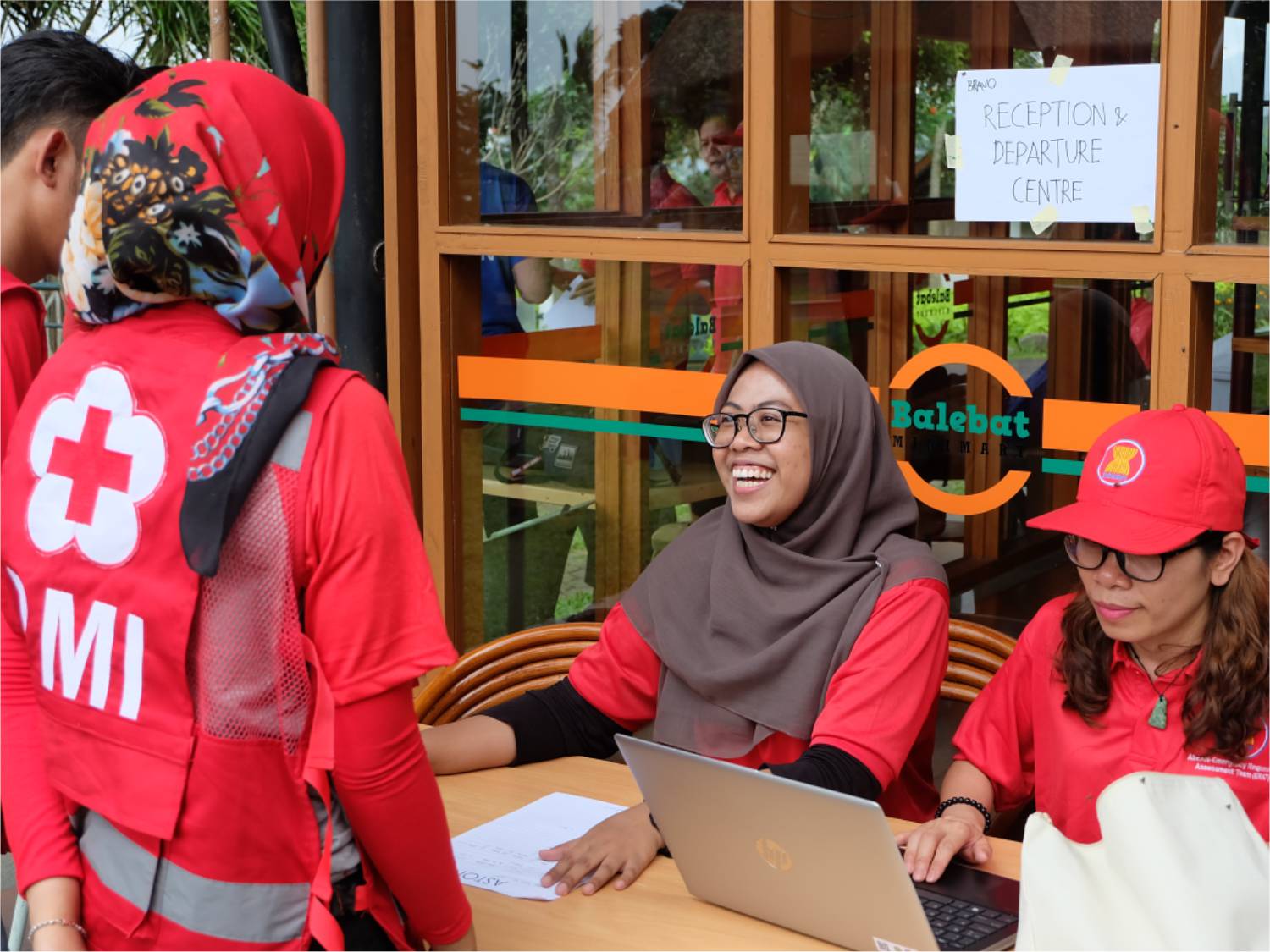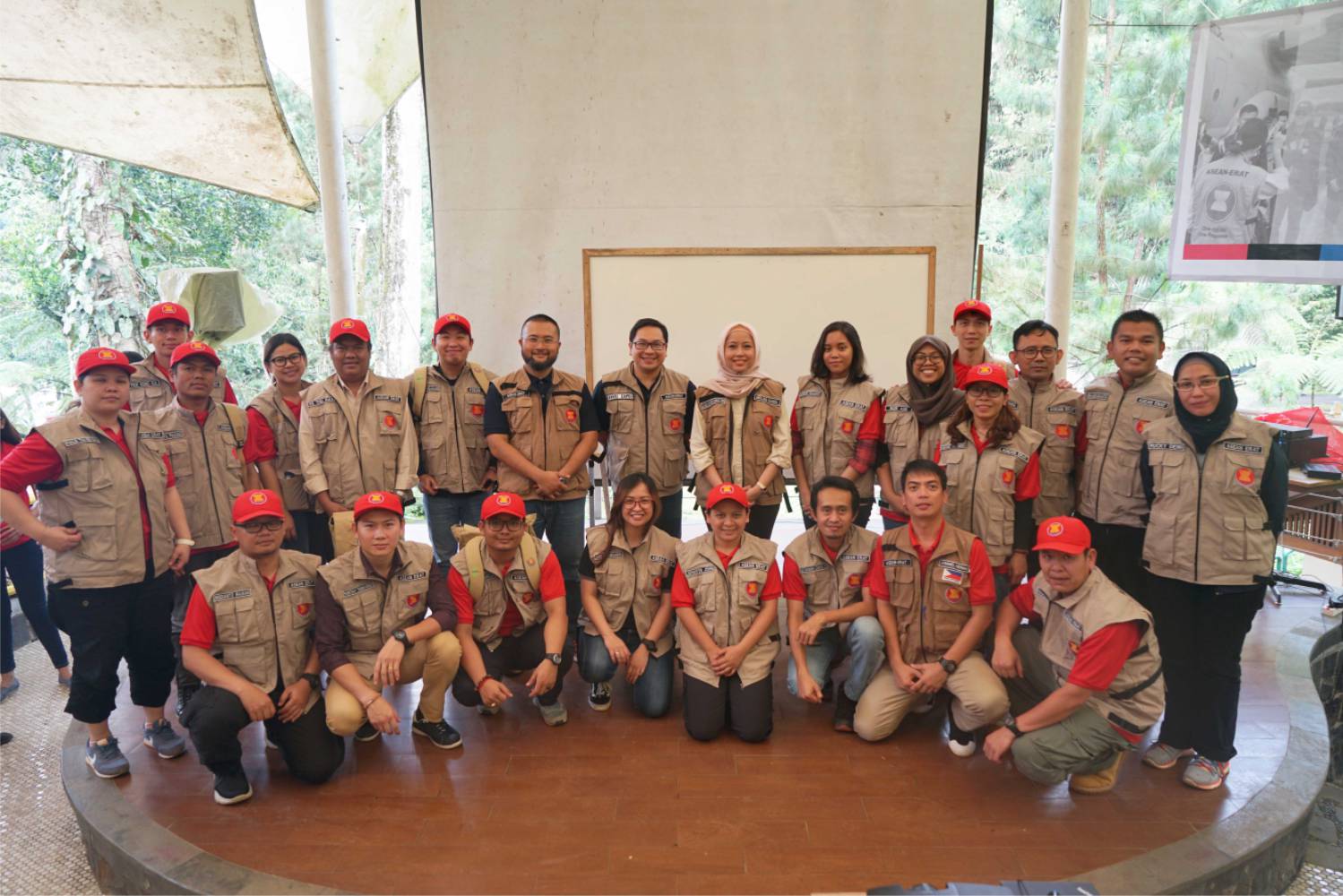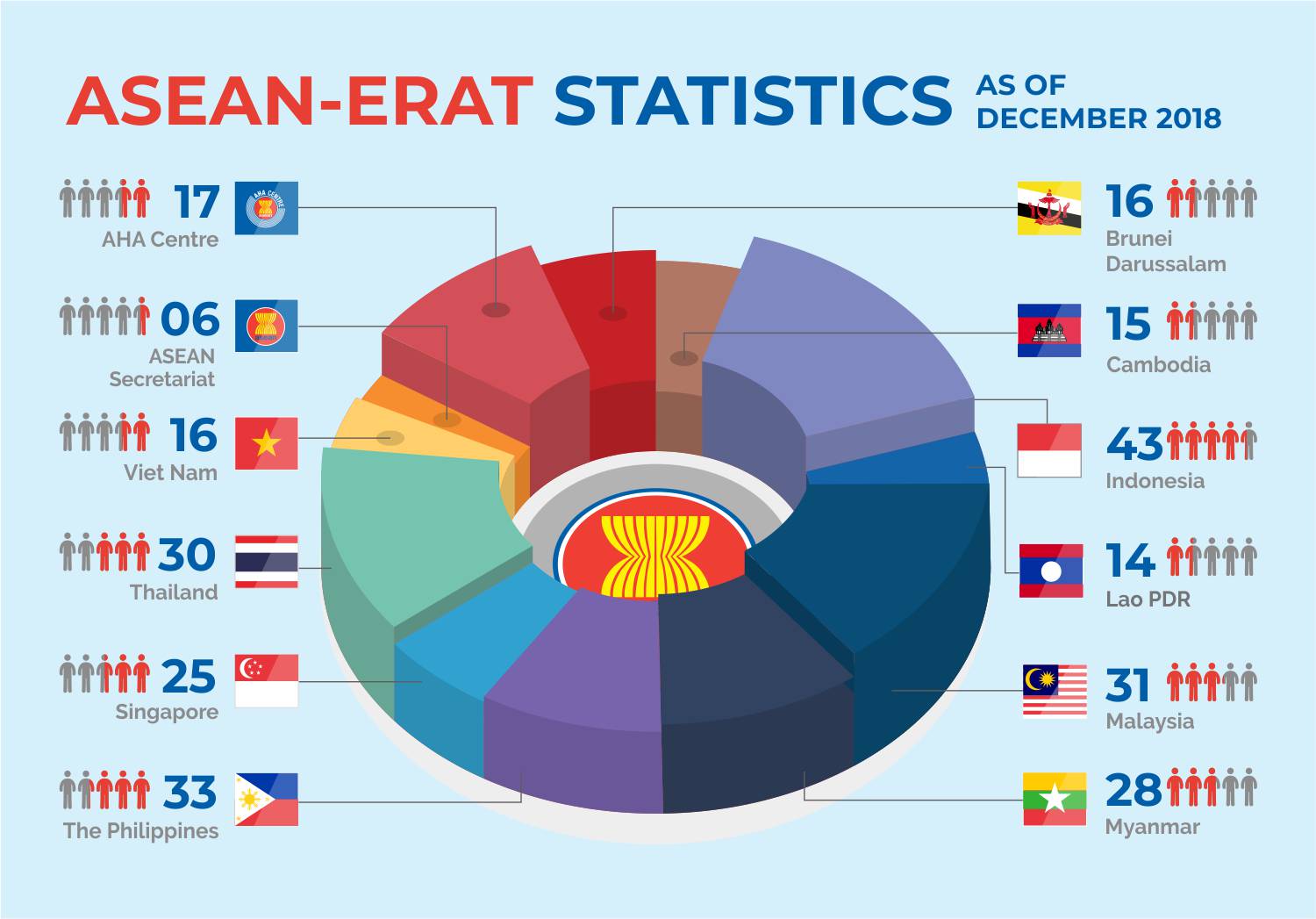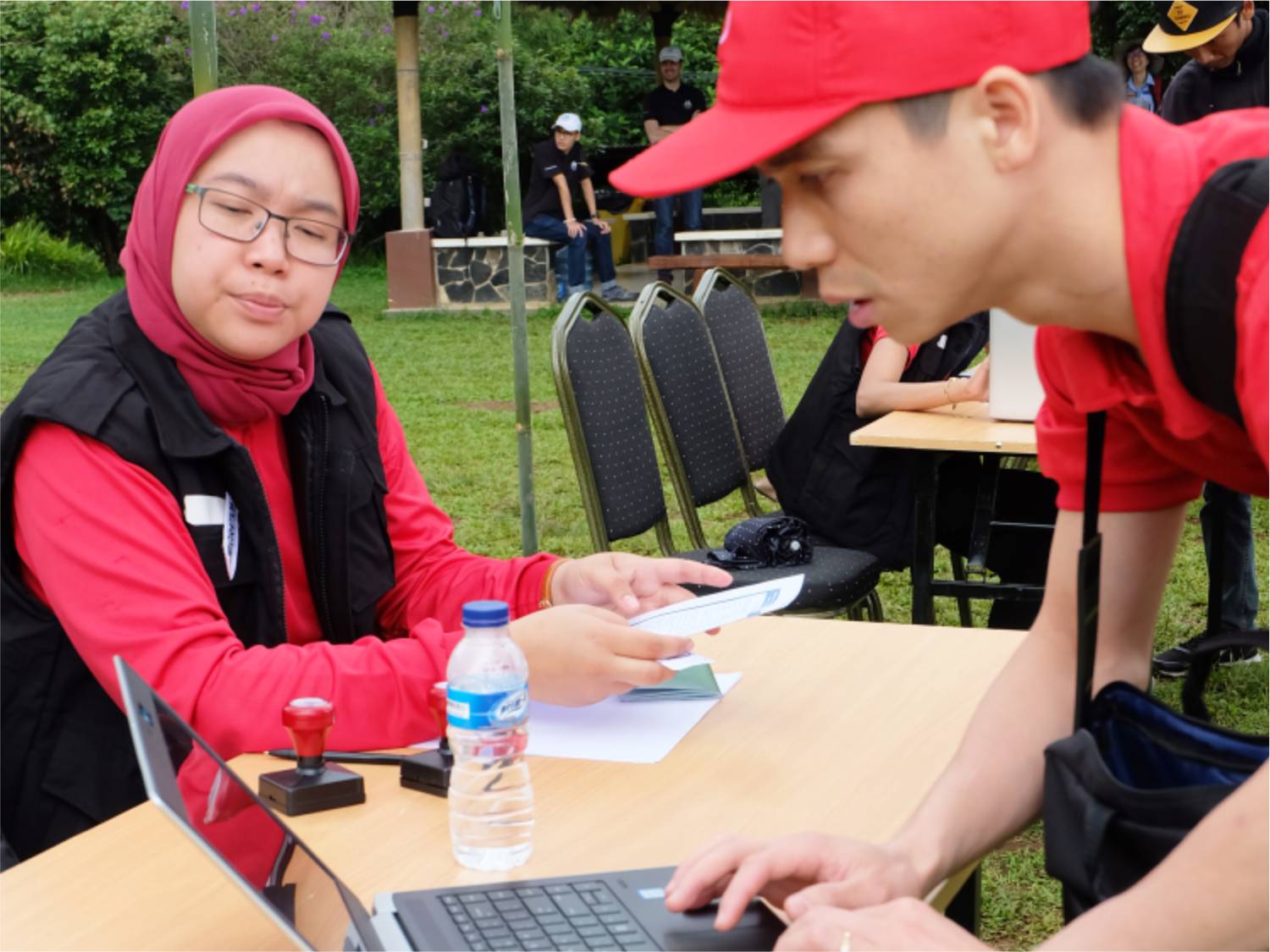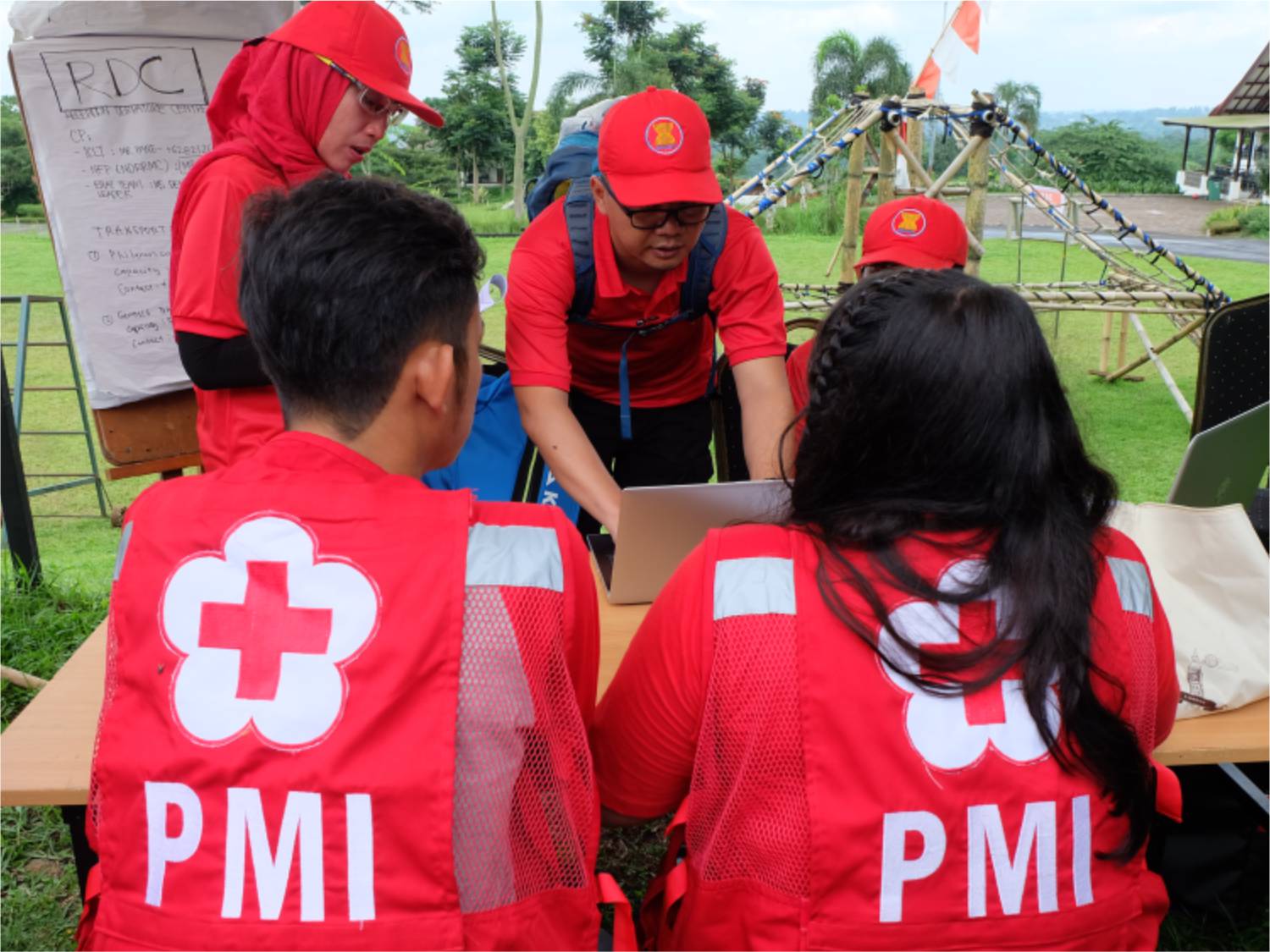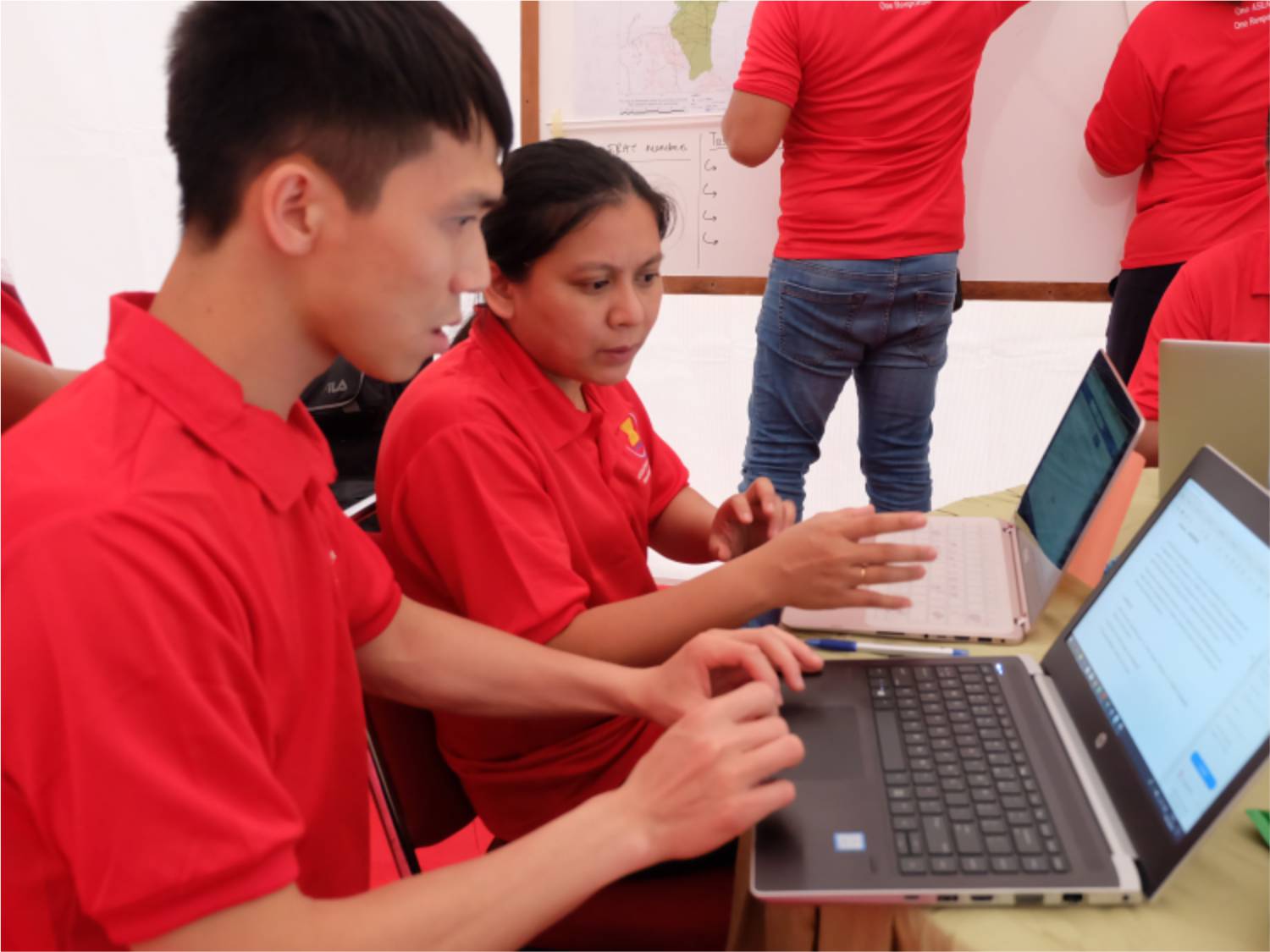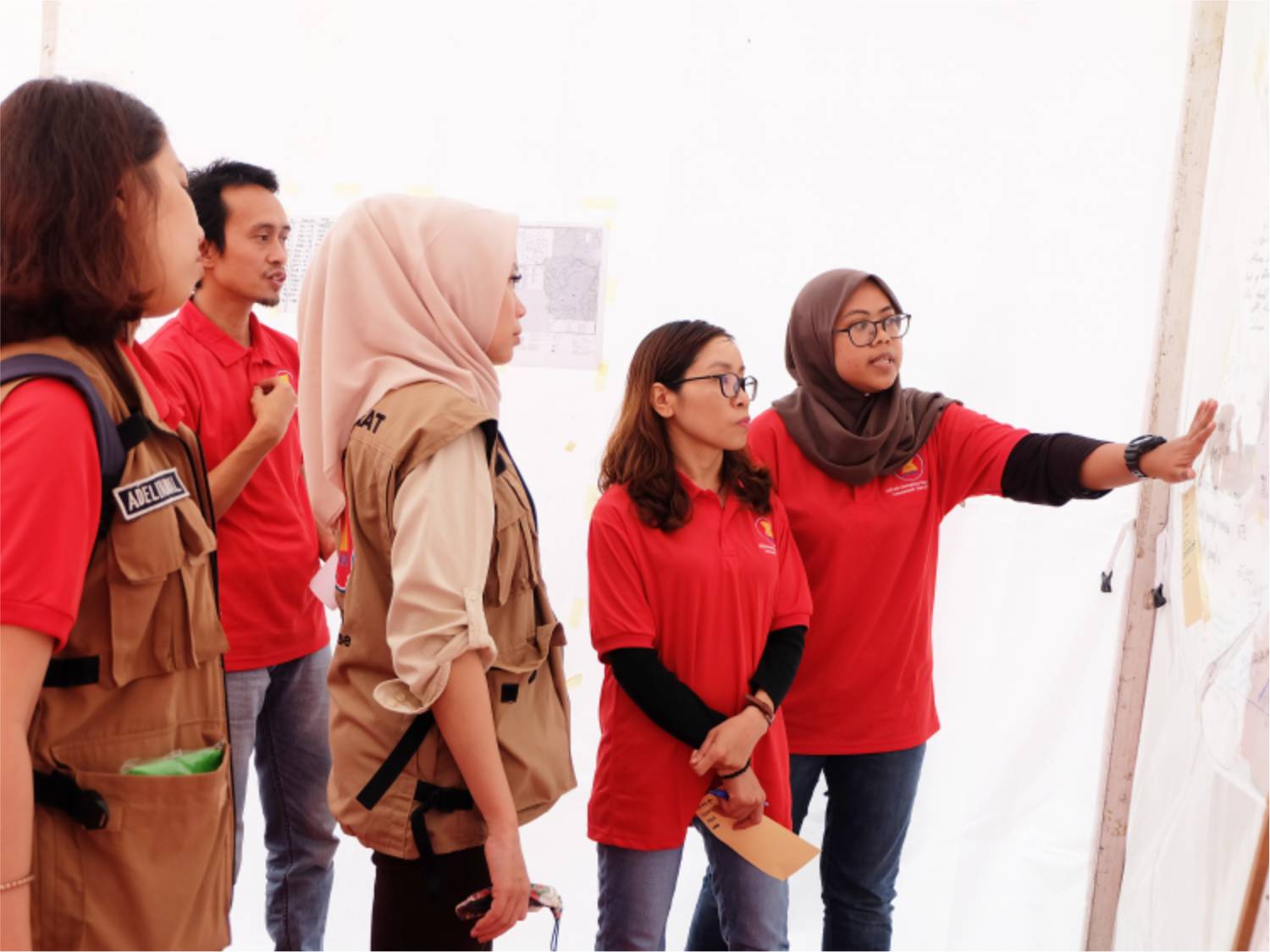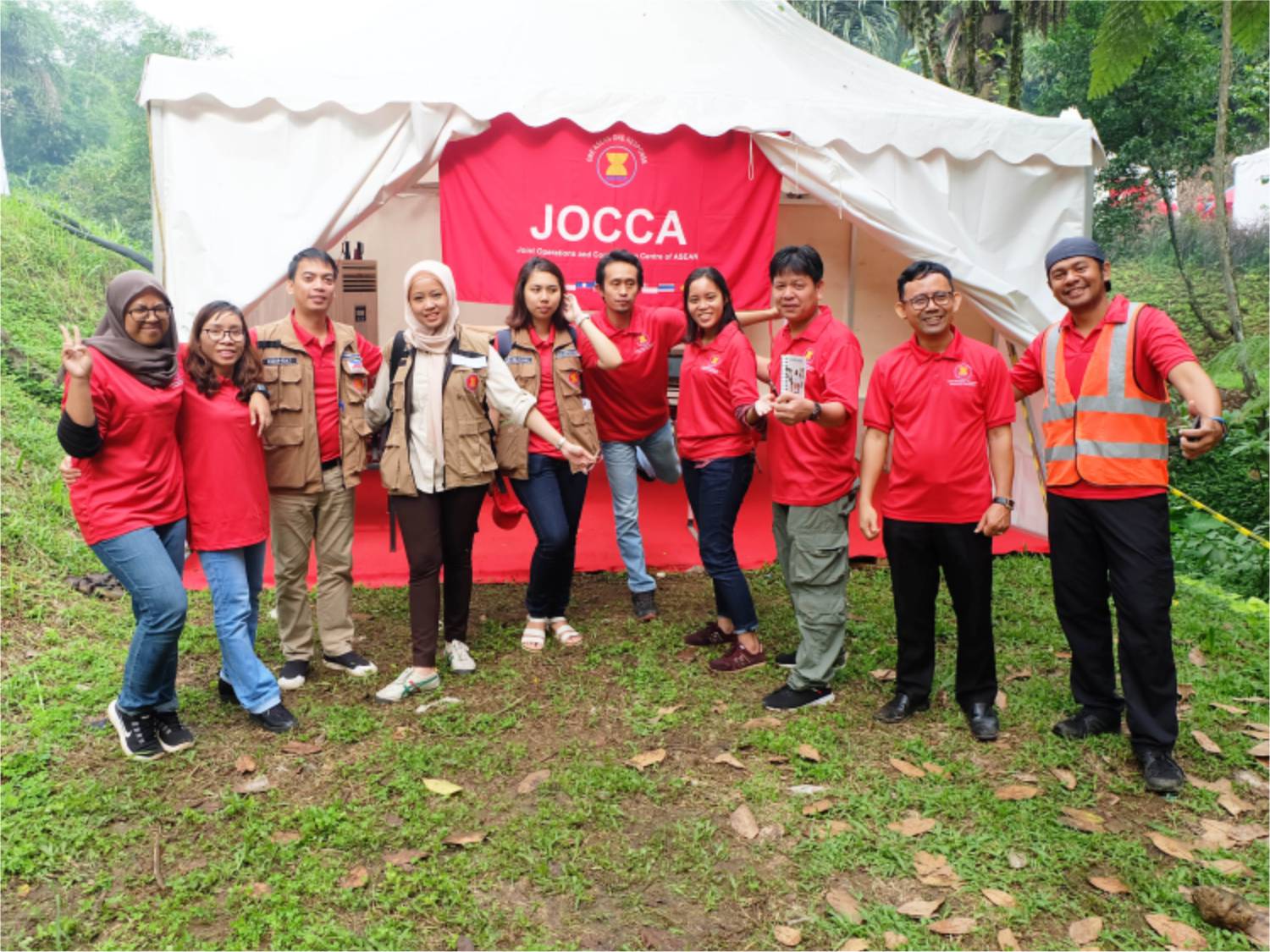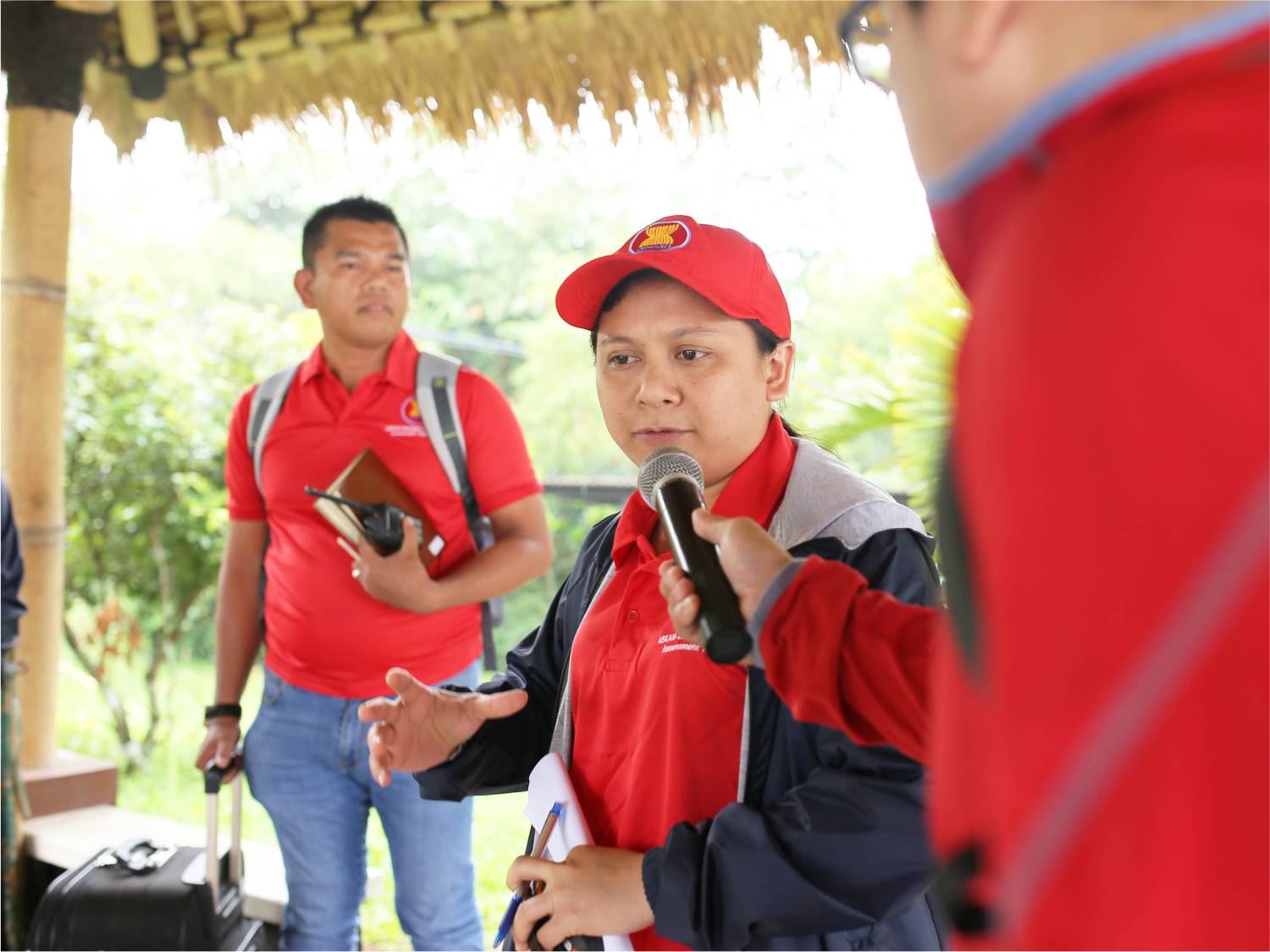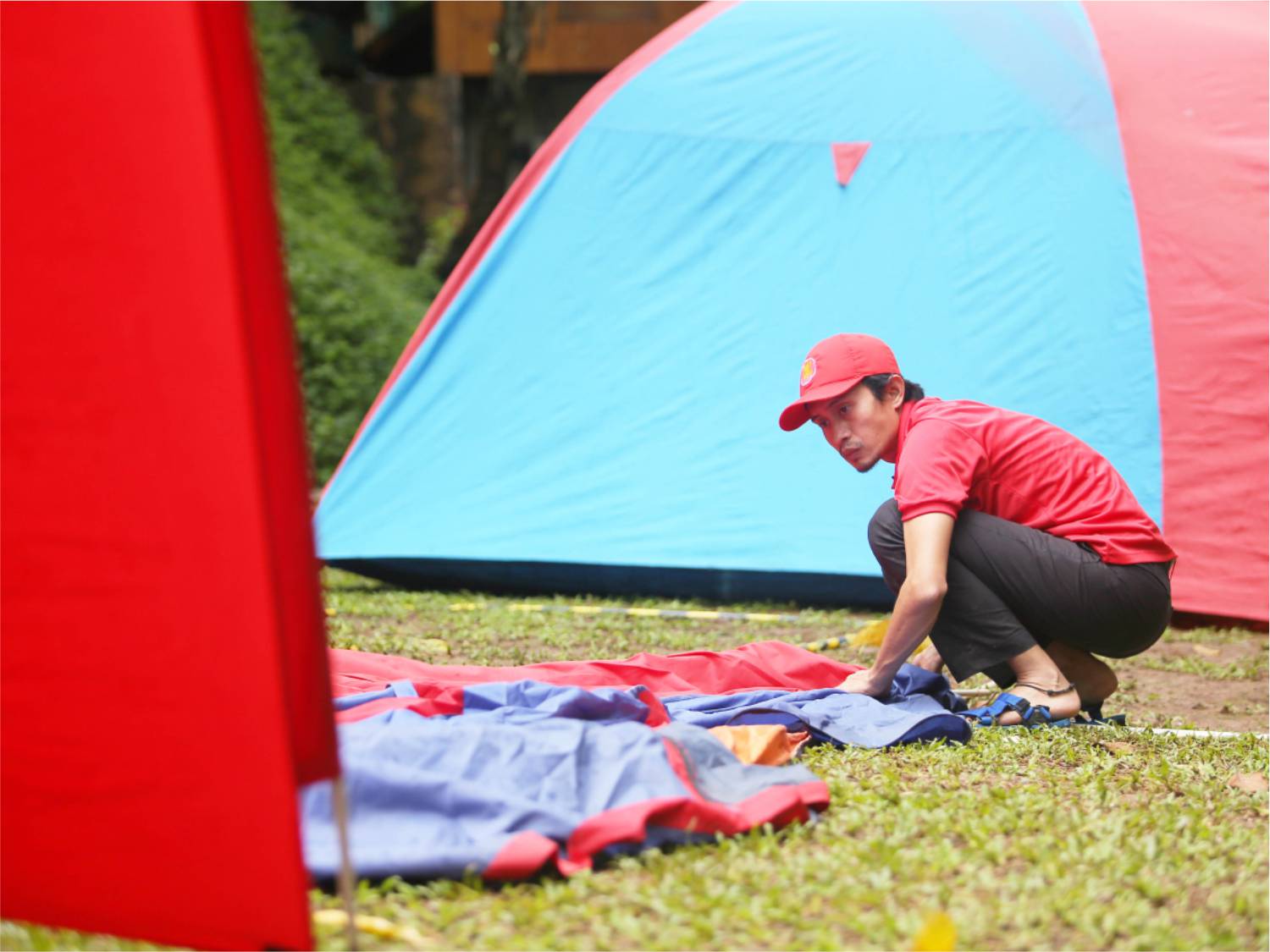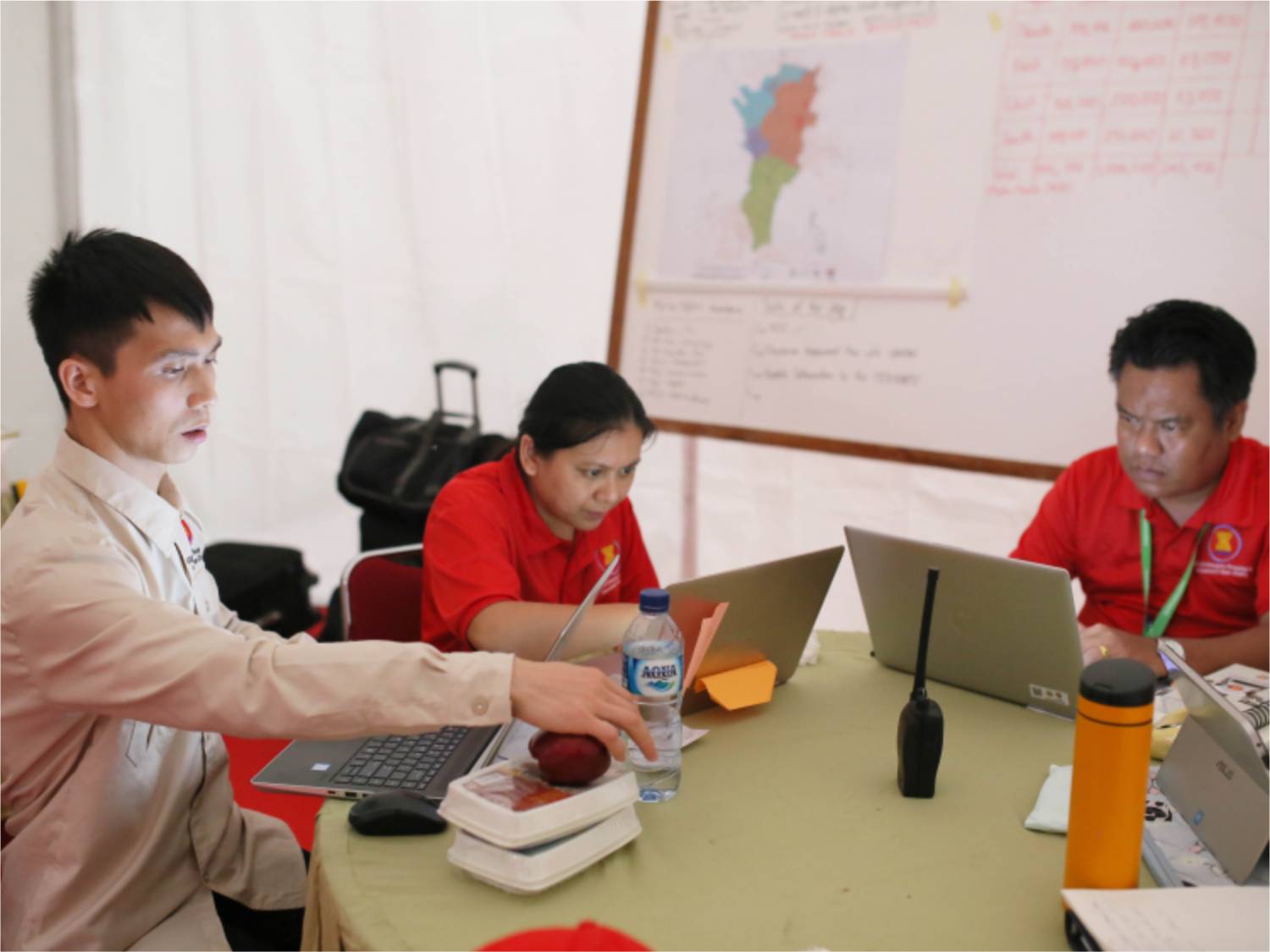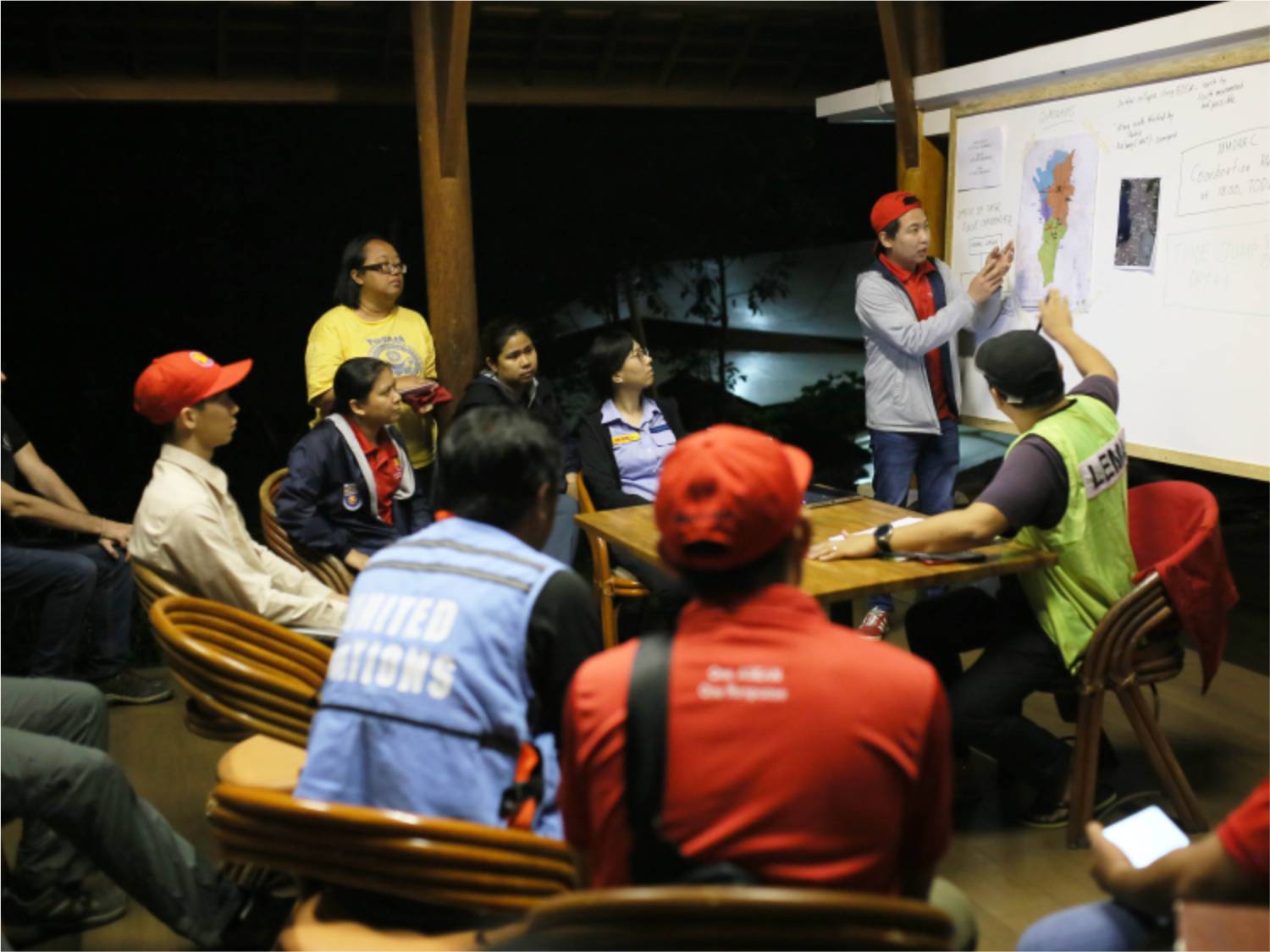Vol 46-Prof.dra. Fatma Lestari

PROF. DRA FATMA LESTARI
“PREPARATION THROUGH EDUCATION IS LESS COSTLY
THAN LEARNING THROUGH TRAGEDY”
Prof.dra. Fatma Lestari is one of Indonesia’s leading academics in the disaster management field, with her particular interest in chemical safety and toxicology allowing her to provide specific insight into the recent the ASEAN Regional Disaster Emergency Response Simulation Exercise (ARDEX-18) held in Cilegon, West Java, that included a scenario on the effect of hazardous materials (hazmat) during disasters. During the preparation of ARDEX-18, The Column caught up with Prof.dra. Fatma, to gain her unique insight on matters such as hazmat, gender empowerment, and community preparedness in the ASEAN disaster management field.
Prof.dra. Fatma has developed her disaster management portfolio working across a range of programmes and activities in the region, now working as a lecturer and researcher in the University of Indonesia’s Department of Occupational Health and Safety, under the Faculty of Public Health. She began her work with the university in 1995, engaging directly with the Government of Indonesia on industrial emergency response and preparedness measures. With a background in chemistry, Prof.dra. Fatma reminds us of the importance of the hazmat element within disaster response by stating “In our country, oil and gas industries are one of the major industries that contribute to the Indonesian energy. They face many challenges – one which is emergency response”.
It is the expansion and development of industry that adds to the risk, Prof.dra. Fatma states, not only in Indonesia but across the region and the rest of the world. Its proximity with the natural environment, alongside local communities, requires strong engagement to develop knowledge and preparedness mechanisms to avoid disastrous outcomes for the region’s people. Prof.dra. Fatma talks of recent efforts to work with communities on disaster preparedness and response at a local level, through a programme known as Kampung Tanggap Bencana (disaster prepared villages). “We provide them with the knowledge such as first aid, how to move victims from the disaster site to a safe zone – it focuses on community participation”, she explains. Prof.dra. Fatma highlights the importance of such programmes across the region, and ensuring they are implemented across a number of mediums, including local government, community centres and local schools.
Linked heavily within such community-based efforts is the role of women in disaster management. As Prof.dra. Fatma notes, “We need to empower more females, because once their knowledge improves, they can teach their children, as mothers are the primary teachers in the home in Indonesian society”. Empowerment is also strategic for information sharing within communities between women, as women tend to have their own forums and methods for engaging deeply within their communities – an element that must be utilised for stronger and more resilient local villages. “If women’s knowledge on disaster management is increased, they can become great leaders in their communities”.
The varying degrees of hazmat size and risks are a key element for Prof.dra Fatma, particularly as ASEAN disaster management begins to focus on increased inclusiveness of hazmat elements in disaster management – such as through the ARDEX-18 exercise. Whether large industrial chemical plants, local village Liquid Petroleum Gas (LPG ) storage tanks, or anything in-between, all form a great risk to the lives and livelihoods of local communities should natural disaster strike. Central to this is the importance of community understanding and participation within disaster management efforts, as Prof.dra Fatma states “while emergency responders may arrive in some places, they can’t be everywhere automatically, so a key first step is if the community can undertake an independent evacuation”. Alongside this, Prof.dra. Fatma reminds us of the importance of government support to such community-based efforts, that can empower and develop them to support themselves during the initial stages of disaster. “Providing communities with the knowledge, equipment and mechanisms to protect themselves is key, then communities are ready and able to act at a moment’s notice.”
Written by : Valerie Bayhon | Photo : AHA Centre
- Published in The Other Side
Vol 46-ACE Programme Graduation

ACE PROGRAMME GRADUATION
After over 1,000 hours of training, and the successful completion of 23 courses – including, amongst others, the humanitarian logistics in Subang, Malaysia, the Critical Incident Leadership Course in New Zealand, and a study visit to Japan – the AHA Centre Executive (ACE) Programme concluded its 2018 programme on the 14th of December, with its graduation day at the ASEAN Secretariat in Jakarta. The seventeen ACE graduates of the programme’s Fifth Batch now enter a total pool of 79 graduates, who will serve as future ASEAN leaders on disaster management.
As part of the graduation, the ACE Programme’s closing gala for 2018, each of the participants receive a Graduation Certificate from the Deputy Secretary-General for ASEAN Socio-Cultural Community, H.E. Kung Phoak, and a Graduation Medal from H.E. Kazuo Sunaga, Ambassador of Japan to ASEAN. The ceremony was also attended by representatives from the ASEAN Member States, ASEAN Dialogue Partners, the United Nations, IFRC, and a number of AHA Centre’s partners.
As part of the ACE Programme, participants were also trained as ASEAN Emergency Response and Assessment Team (ASEAN-ERAT) members, enabling them to be mobilised during disaster responses across all ASEAN Member States. The overwhelming success of the ACE Programme Fifth Batch would not have been possible without strong support from partners – such as UNOCHA, UNDP, UNICEF, UNFPA, WFP, IOM, Red Cross, USFS, Red-R Australia, DKI-APCSS, and New Zealand Aid – who supported the programme through the delivery of various technical humanitarian skills and leadership courses and activities.
The graduation ceremony is an embodiment of the participants’ hard work and commitment to complete the courses, and also forms the starting point for them to embark on their new journey in the disaster management sector. “This is a message of victory, in the sense that ASEAN now has 17 additional warriors to respond, to work, and to strengthen the region when it comes to disaster risk reduction and management”, exclaimed new graduate Jose Angelo Mangaoang of the Philippines during his graduation speech.
The value of the ACE Programme was highlighted by Indonesian participant Ms. Rucky Dewi, as she shared her experiences throughout the course.
“The required humanitarian actions might be beyond our individual limits, and therefore that is the purpose of the ACE Programme training. To reach that individual limit, and to take on the impossible now becomes possible. To ensure the accelerated response for delivery of humanitarian assistance worldwide, and to promote greater benefit of strong leadership in times of disaster, particularly for the people affected by the crisis.”
With the support of the Government of Japan, through the Japan-ASEAN Integration Fund (JAIF), the AHA Centre can successfully close the book on its conduction of this programme for the fifth time. Finally, the AHA Centre once more offers its congratulations to all graduates – we are sure you will undertake this role with great professionalism and responsibility.
Written by : Ferosa Arsadita | Photo : AHA Centre
- Published in AHA Centre Diary 1
Vol 46-United States Agency for International Development

UNITED STATES AGENCY FOR
INTERNATIONAL DEVELOPMENT
The United States Goverment through the United States Agency for International Development (USAID) is one of the AHA Centre’s original partners, with the agency having supported the AHA Centre since its establishment. This support has allowed the AHA Centre to perform its roles as a regional humanitarian and disaster management response institution to the scale and capacity that we see today. The partnership between USAID and the AHA Centre has resulted in a cast range of achievements, including, amongst many, the development of a disaster monitoring and response system, and the establishment of a customised technical assistance and training facility.
One of the most notable collaborations between the two parties has resulted in the development of the Disaster Monitoring and Response System (DMRS), implemented through the US PROGRESS programme. DMRS is an effective tool that improves the consolidation of meteorological, seismic, and demographic data, information that is integral for decision making, as well as almost real-time disaster monitoring across the region. Alongside this, the partnership with USAID has also resulted in the development of the Risk and Vulnerability Assessment (RVA) guidelines, which serve as a key tool for identifying vulnerabilities in areas prone to natural disasters. The RVA guidelines aim to support disaster managers in prioritising preparedness measures for both people and economic assets.
In terms of capacity building, the AHA Centre and US PROGRESS continue to develop and refine training curriculum to create a framework for the ASEAN Standardisation and Certification for Experts in Disaster Management (ASCEND). USAID also funded the development of the ASEAN Joint Disaster Response Plan (AJDRP), which acts as the main guiding blueprint for One ASEAN One Response. Such support expanded as far as the AJDRP’s review period, which included implementation through contingency planning workshops in Metro Manila and Myanmar during 2017. As part of these workshops, various disaster scenarios were tested, including under the duress of earthquake, tsunami, and typhoon. Information regarding identified gaps and recommendations was gathered from participants, and then incorporated into the updated and refined AJDRP document.
Additionally US PROGRESS also works with the AHA Centre related to the use of Information and Communications Technology (ICT) in disaster management activities. A number of workshops have already been undertaken, introducing improved ways to utilise new communication technologies such as TV white space, alternative radio frequencies, and social media to increase the ASEAN region’s capacity to respond to disasters.
USAID has supported the AHA Centre in developing skills through trainings, in particular through funding the ASEAN Technical Assistance and Training Facility (TATF) in an effort to build disaster resilient nations and communities through the ASEAN Development Vision to Advance National Cooperation and Economic Integration (ADVANCE) programme. Earlier in 2018, the agency facilitated two workshops on Incident Command Systems and Incident Action Planning. In partnership with the United States Forest Service, the two-week workshop equipped participants with skills to develop strategies for various emergency-response scenarios.
Written by : Christella Feni, Will Shea | Photo : USAID
- Published in Partnership
Vol 46-Natural Disaster Tsunami in-Depth

NATURAL DISASTER
TSUNAMI IN-DEPTH
Tsunami is one of the natural disasters that fall under the monitoring systems of the AHA Centre. The word is derived from Japanese tsu (harbour) and nami (wave). After previous editions delved into earthquake and volcano geophysical disasters, this month we focus towards tsunamis, which may be triggered by various geophysical phenomena, and can have devastating results for the region and its communities. We further explore the cause of these terrifying oceanic occurrences, and learn what to do when faced with the potential onset of such giant, destructive waves.
A tsunami is an ocean wave that is caused by water displacement, most often triggered by a geophysical event (earthquake, volcanic landslide etc.) taking place near or under the ocean. This water displacement results in the formation of large waves that then move quickly (up to 800 km per hours – the speed of an aeroplane) towards the coastline. Such waves can vary in size and strength – small enough to only register on specific monitoring instruments, or large and destructive such as the 2004 Indian Ocean tsunami – depending on a range of influencing factors. Tsunami events will normally consist of many waves with strong currents that surge inland from the coastline, picking up and destroying anything that stands in their way. Recent examples of their destructive force in ASEAN include the 1976 Mindanao Tsunami, the 1992 Flores Tsunami, the 2004 Indian Ocean Tsunami, the 2006 Pangandaran Tsunami, the 2010 Mentawai Tsunami, the 2018 Central Sulawesi Tsunami, and the 2018 Sunda Strait Tsunami. ASEAN-ERAT responded to the 2010 Mentawai and 2018 Central Sulawesi tsunamis.
PREPAREDNESS AND RESPONSE
Tsunami monitoring and early-warning technology continues to improve and advance across the ASEAN region and the world, in-line with continuing technological advances overall. The AHA Centre, national disaster management organisations, national meteorological agencies, and a range of partners continue to develop, test and implement technology and procedures aimed to support communities and minimise loss as a result of tsunami events. Currently, ASEAN Member States are beneficiaries and active partners of both the Pacific Tsunami Warning System and Indian Ocean Tsunami Warning System.
However, such events remain unpredictable, and can still evade even the most modern technology. Therefore, the importance of community (particularly coastal-based) understanding and preparedness remains key to surviving tsunami events. The following simple steps, if implemented by all communities, could have a significant impact on ensuring safety during a tsunami event:
1. KNOW YOUR SURROUNDINGS
2. ENGAGE WITH WARNING SYSTEMS
3. INITIATE OR PARTICIPATE IN TSUNAMI EVACUATION DRILLS
4. WHEN IT IS SAFE, EVACUATE IMMEDIATELY
TSUNAMI TRIGGERED EVENTS
EARTHQUAKE
The most common cause of tsunamis are earthquakes (usually underwater), with the shifting of tectonic plates under the sea causing the displacement of water that results in the giant waves. While such undersea earthquakes are taking place daily across the world, recent tsunamis have most often been caused by significantly large earthquakes that registered at relatively shallow depth and took place quite close to landmass. Certain types of earthquake can also contribute to tsunami occurrences, with different fault line movements (for example strike-slip or dip-slip) effecting the displacement of water within the localised ocean area. While often such earthquakes may be felt by communities before a tsunami arrives, at other times they are not, depending upon the location, size and depth of the preceding earthquake.
VOLCANIC ERUPTIONS AND LANDSLIDES
Although very rare, there have been cases of tsunami triggered by volcanic eruptions and landslides (either due to above or undersea displacement). In the ASEAN context, major historic magmatic eruptions of Mount Krakatau (Indonesia, 1883) and Mount Taal (the Philippines, 1965) triggered tsunamis that caused significant casualties. This was the scenario that occurred again on the 22nd of December 2018, which caught nearby populations completely off-guard. Mount Anak Krakatau’s eruption triggered a landslide of around 64 hectares, with the displaced water causing numerous tsunami waves that struck coastlines on both Java and Sumatra – the two islands that lie on either side of the Sunda Strait. Such events are much more difficult to monitor, and may go undetected, or barely register on monitoring technology – meaning the ensuing tsunami can catch many close-by communities unaware.
OTHER POTENTIAL CAUSES
METEOROLOGICAL-TSUNAMI caused by atmospheric disturbances.
METEOR ATTACK-TSUNAMI caused by the fall of large meteorites or asteroids in the oceans.
MAN-MADE EVENTS such as nuclear explosions.
Written by : Mizan Bisri, Will Shea
- Published in Insight
Vol 46-Monthly Disaster Review and Outlook

MONTHLY DISASTER REVIEW AND OUTLOOK
DECEMBER 2018 | DISASTER MONITORING & ANALYSIS
(DMA) UNIT, AHA CENTRE
GENERAL OVERVIEW OF DECEMBER 2018
As generally expected for the “winter” or Northeast monsoon period, the southern part of ASEAN – particularly Indonesia, Malaysia, southern Philippines and Thailand – experienced an increase in floods during December 2018. Some areas within those countries also experienced landslides due to heavy rainfall in mountainous areas.
In terms of geological hazards, 32 earthquakes of magnitude 5.0 or higher were reported in December, compared to 18 earthquakes recorded during December of 2017. However, none of the recorded seismic activities had significant effects to constitute a disastrous event. A M7.2 earthquake with a deep epicentre of 60 km below the earth’s surface was also reported near Davao Oriental, the Philippines, which triggered a tsunami warning – although the warning was eventually cancelled. In general, there were no fatalities or significant damage directly caused by earthquakes this month. However, there was one undetected tsunami event in Sunda Strait that caused significant number of fatalities and damage in Banten and Lampung Provinces of Indonesia. The tsunami, that struck on the evening of December 22, was triggered by landslide on Mount Anak Krakatau, that resulted from a series of eruptions and general increased volcanic activity on the mountain that sits in the middle of the Sunda Strait. From post-event observations, Mt. Anak Krakatau was found to have reduced in height from 1,800 metres to 357 metres, based on pre and post-tsunami images released by the Indonesian Agency for the Assessment and Application of Technology (BPPT). Consequently, the Centre for Volcanology and Geological Disaster Mitigation (PVMBG) elevated the alert status from advisory to watch (level III out of maximum IV).
OUTLOOK FOR JANUARY 2019
In the first week of the fortnight, a northeast monsoon surge is expected to cause wetter conditions in the South China Sea, particularly over coastal Thailand and Viet Nam. Related stronger monsoonal winds are likely to bring wetter weather to areas around the Java Sea as well. Conversely, drier conditions are expected over the Philippines. According to PAGASA climatology of tropical cyclones, there is a possibility of up to one tropical cyclone passing through the Philippines in January. Colder conditions in the highlands of the northern ASEAN region are forecasted. Following the cold conditions in the first week, should there be a sudden drop in temperatures, it might result in increased risk of flash floods with melting of snow or increased precipitation in the highlands.
Later in the month, the wetter conditions over the South China Sea are likely to spread further southward to affect the north-eastern coast of Peninsular Malaysia and southern Thailand. Thunderstorms are expected near the equatorial belt as the trade winds will bring heavier rainfall across the South China Sea towards Peninsular Malaysia and Singapore from the eastern front. Areas around the Java Sea are likely to become drier during this period.
The prevailing Northeast Monsoon is expected to persist until March 2019. This will bring occasional extended periods of dry weather in the northern ASEAN region during this period. Tropical storms and depressions will generally pass through Central and Southern Philippines, and towards Central and Southern Viet Nam bringing heavier rainfall in these regions. Cold spells will also be common in the northern lowland provinces of Viet Nam.
Written by : Qing Yuan Pang
DISCLAIMER
Disclaimer: AHA Centre’s estimation is based on data and information shared by National Disaster Management Organisations (NDMOs) and other relevant agencies from ASEAN Member States, international organisations and news agencies. Further information on each recorded-significant disaster, description and detail of data and information are available at: http://adinet.ahacentre.org/reports.
- Published in Monthly Disaster Outlook
Vol 46-The 10th Induction Course of ASEAN-ERAT

THE 10TH INDUCTION COURSE OF
ASEAN-ERAT
For the second time in 2018, the AHA Centre successfully conducted an ASEAN Emergency Response and Assessment Team (ERAT) level 1 course. The 100-hour course was implemented in Bogor, Indonesia during the first week of December 2018, resulting in 19 new graduates, which brings the total pool of talent to 275 deployable ASEAN-ERAT ready to respond to disasters across the region.
“I have been involved in several ASEAN-ERAT trainings and this by far is the most intense one”, said Mr. Sébastien Latouille, the representative from Télécoms Sans Frontières who co-facilitated the course. His remarks was echoed by other facilitators from the AHA Centre, DHL, Indonesian Red Cross, and MapAction. Alongside the continuous course content injections and changes – aimed to resemble the unpredictability of an actual emergency setting – participants also undertook mock-up assessments in mountainous terrain during the midst of a heavy downpour. Thankfully, the ambulance that was on stand-by was not required, as all participants took care of themselves and each other, conducting their work in good health and good shape.
In addition to the regular modules – such as logistic management, information management, rapid assessment, and coordination – a new innovation was integrated to the course design. With the support of DHL Asia Pacific, participants in this course were challenged to coordinate with partners from the private sector. In total, approximately 100 elements were injected during the 48-hour drill, that was a simulation of an emergency response to an earthquake in Metro Manila.
While handing over the signature ASEAN-ERAT vests, Ms. Adelina Kamal, Executive Director of the AHA Centre reminded all graduates that “when you wear the ERAT vest, wear it with pride, but also remember that you are the bridge of trust for ASEAN, and you are the ASEAN’s solidarity on the ground. Always treat fellow ERAT members as your friends, and continue to build strong relationship with them”.
Written by: Shintya Kurniawan | Photo : AHA Centre
- Published in Highlight

